CALENDAR

Hot Questions – Cold Storage
3/02/2022 — 30/03/2026
10:00—19:00
Architekturzentrum Wien
Museumsplatz 1 im MuseumsQuartier (Eingang Volkstheater), 1070 Wien
The Permanent Exhibition at the Architekturzentrum Wien
The permanent exhibition at the Architekturzentrum Wien provides insights into the most extensive and comprehensive collection on Austrian architecture of the 20th and 21st centuries. At the centre is the investigation of key exponents, including well-known and less well-known objects. Seven Hot Questions bring Cold Storage to life.
The Architekturzentrum Wien is the only museum in Austria devoted exclusively to architecture. As the Az W Collection has expanded over the last 17 years and consists of over 100 architects’ archives as well as extensive collections of individual projects, a large number of objects are being shown for the first time in the Permanent Exhibition: ‘Hot Questions — Cold Storage’. Selected models, drawings, furniture, fabrics, documents and films develop new threads in seven thematic episodes. Each episode is preceded by one of today’s burning issues, a Hot Question that brings Cold Storage to life.
The nation’s building activity with all of its cultural, social, economic and technical ramifications is made strikingly visible. The contents covered range from the special significance of Red Vienna to architectural pedagogical experiments in the wake of the 1968 movement or architectural revolts in Vorarlberg, to historical and current examples of environmental rethinking. The exhibition also engages with the ideological instrumentalisation of architecture and spatial planning and the active collaboration of architects in authoritarian systems, as well as their resistance. At the same time, the exhibition challenges deficits in the canon of Austrian architectural history, for instance from a perspective of gender equality. New players are featured, light is shed on previously little known sources and the key focus is on multiple perspectives instead of on a national historical narrative. This diversity is also reflected in the exhibition design. The sheer variety of the exponents and their display makes a visit to the exhibition a sensual and an atmospheric experience.
Concept: Angelika Fitz, Monika Platzer
Curator: Monika Platzer
Curatorial Assistance: Sonja Pisarik, Iris Ranzinger, Katrin Stingl
Production: Andreas Kurz
Finances und conversion: Karin Lux
Assistance: Barbara Kapsammer
Exhibition design: tracing spaces / Michael Hieslmair, Michael Zinganel ; seite zwei / Christoph Schörkhuber, Stefanie Wurnitsch
© Architekturzentrum Wien, Sammlung

This exhibition is a project jointly undertaken by the Weltmuseum Wien and the private Museu de Arte Indígena (MAI) in Curitiba, Brazil. The show’s curators, Claudia Augustat and Julianna Podolan (MAI), engage these two museum collections in dialogue, reflecting thereby the manner in which autonomous works of art have evolved from functional and ritual objects.
© Museu de Arte Indígena, Curitiba
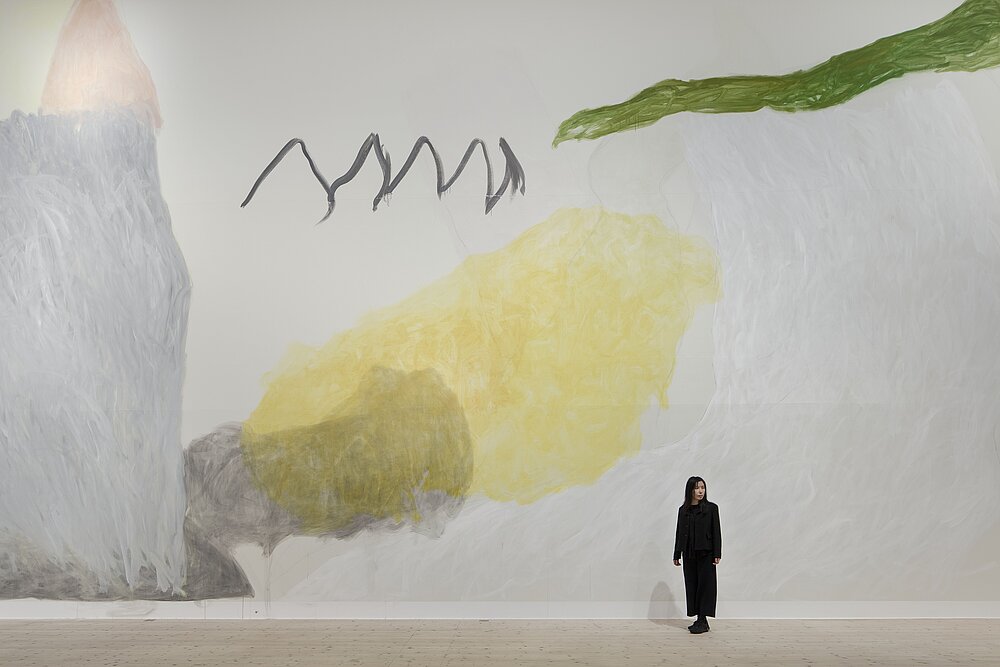
Jongsuk Yoon: Kumgangsan
7/06/2024 — 1/08/2025
mumok – Museum moderner Kunst Stiftung Ludwig Wien
Museumsplatz 1,1070 Wien
On the occasion of its reopening, mumok has invited the artist Jongsuk Yoon to conceive a new mural for the museum lobby. After photo-based installations by Cindy Sherman, Louise Lawler, and Jeff Wall, the most recent artist to create a mural was Siegfried Zaworka, who in his work dealt with the illusionist potentials of painting. Jongsuk Yoon now responds to the challenge of the monumental format with levitating, wholly anti-monumental and anti-heroic landscape pictures. Reduced means and the processuality of painting govern Yoon’s artistic practice, which she has developed in critical reflection of the paradigms of Western Modernism and East Asian traditions—particularly Expressionism, Abstract Expressionism, and Korean sansuhwa (Mountain and Water Paintings). Diaphanous layers of large-scale color patches, processual traces, and graphic ciphers condense to form panoramic “soul landscapes” (J. Yoon), in which “inner” and “outer” perspectives oscillate.
Kumgangsan is the painterly convergence on a mountain region that Yoon herself has never set foot on: Since 1945, it has been the arbitrary dividing line and visible border between North and South Korea and, as such, is a symbol of an unresolved geopolitical conflict and its still traumatizing aftermath.
Jongsuk Yoon vor dem Wandbild Sun and Moon, Foto: Kalle Sanner © Nordiska Akvarellmuseet Courtesy the artist and Galerie nächst St. Stephan Rosemarie
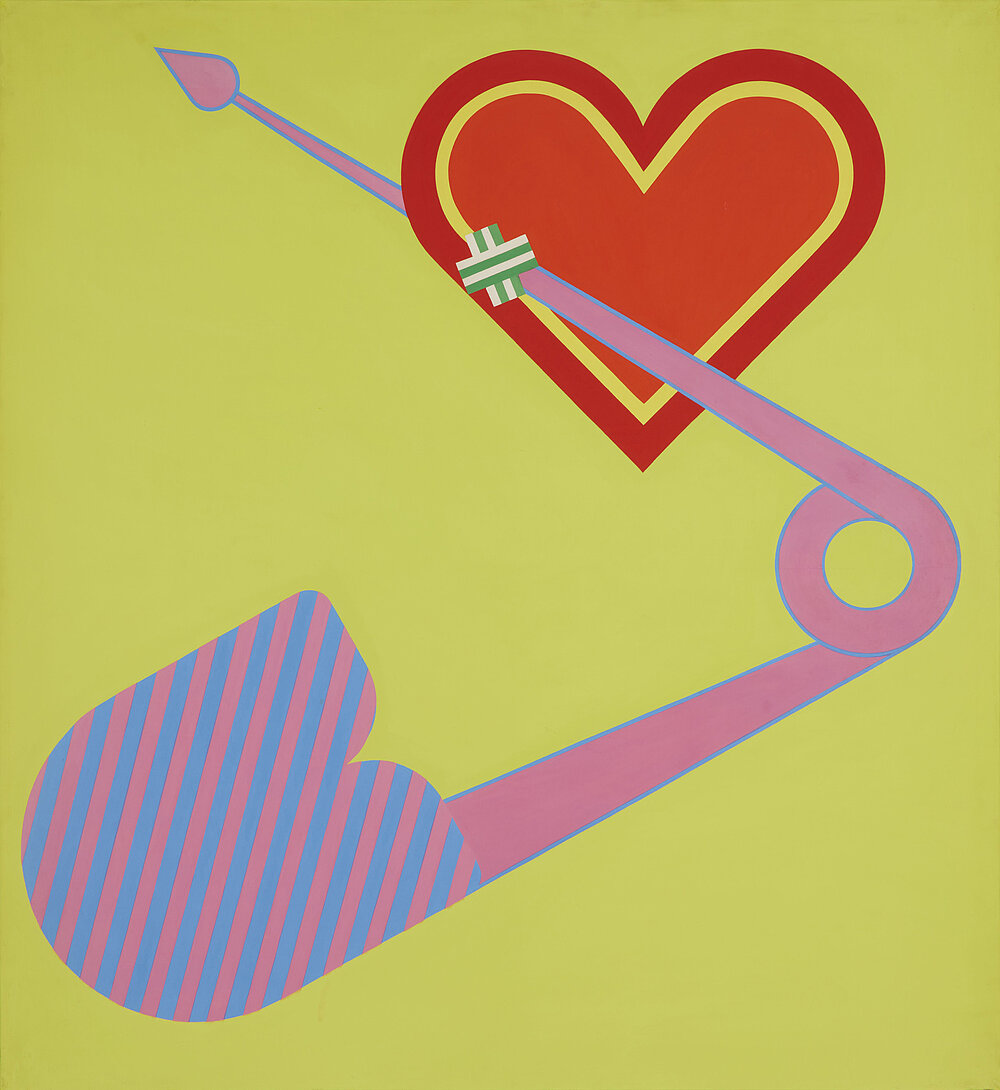
Mapping the 60s - Art Histories from the mumok Collections
5/07/2024 — 11/02/2026
mumok – Museum moderner Kunst Stiftung Ludwig Wien
Museumsplatz 1,1070 Wien
The exhibition Mapping the 60s is based on the thought that substantial sociopolitical movements of the twenty-first century have their roots in the 1960s. Black Lives Matter and #MeToo, for example, have built on the anti-racist and feminist upheavals of yesteryear—as have current debates on war, mass media and mechanization, consumerism, and capitalism.
The developments of the 1960s in general and the events around 1968 in particular are not only paradigmatic in social and political terms, but also essential with regard to cultural policies. In 1962, the Museum des 20. Jahrhunderts was founded in Vienna, a precursor of mumok, whose collection focuses on Pop Art, Nouveau Réalisme, Fluxus, Viennese Actionism, performance art, Conceptual Art, and Minimal Art—artistic movements of the 1960s. Even when we ask ourselves how to address art history today and make it productive, we encounter discussions that go back to that decade.
Curated by Manuela Ammer, Marianne Dobner, Heike Eipeldauer, Naoko Kaltschmidt, Matthias Michalka, Franz Thalmair
Artists: Arman, Siah Armajani, Richard Artschwager, Evelyne Axell, Jo Baer, John Baldessari, Iain Baxter, Marlène Belilos / André Gazut, Joseph Beuys, Peter Blake, Mel Bochner, Alighiero Boetti, George Brecht, Peter Brüning, Jack Burnham, Michael Buthe, James Lee Byars, Pier Paolo Calzolari, Christo, Chryssa, Jef Cornelis, Robert Cumming, François Dallegret, Hanne Darboven, Walter De Maria, Jan Dibbets, Öyvind Fahlström, Mathilde Flögl, Sam Francis, Karl Gerstner, Alviani Getulio, John Giorno, Domenico Gnoli, Roland Goeschl, Robert Grosvenor, Hans Haacke, Raymond Hains, Sine Hansen, David Hockney, Michael Heizer, Richard Hamilton, Duane Hanson, Jann Haworth, Dick Higgins, Davi Det Hompson, Robert Huot, Robert Indiana, Alain Jacquet, Olga Jančić, Tess Jaray, Alfred Jensen, Jasper Johns, Asger Jorn, Allan Kaprow, Ellsworth Kelly, Corita Kent, Edward Kienholz, Konrad Klapheck, Kiki Kogelnik, Joseph Kosuth, Gary Kuehn, John Lennon, Les Levine, Sol LeWitt, Roy Lichtenstein, Richard Long, Lee Lozano, Mario Merz, Robert Morris, Ronald Nameth, Bruce Nauman, Claes Oldenburg, Jules Olitski, Yoko Ono, Dennis Oppenheim, Panamarenko, Pino Pascali, Walter Pichler, Larry Poons, Mel Ramos, Germaine Richier, Bridget Riley, Jean-Paul Riopelle, James Rosenquist, Teresa Rudowicz, Carolee Schneemann, Karl Schwanzer, George Segal, Richard Serra, Miriam Shapiro, Robert Smithson, K.R.H. Sonderborg, Keith Sonnier, Sophie Taeuber-Arp, Paul Thek, Walasse Ting, Günther Uecker, Bram van Velde, Stan Vanderbeek, Frank Lincoln Viner, Franz Erhard Walther, Franz Erhard Walther / Arno Uth, Bernar Venet, Wolf Vostell, Andy Warhol, William Wegman, Lawrence Weiner, Tom Wesselmann, William T. Wiley
Sine Hansen On Top, 1967 130 cm x 120 cm x 2.8 cm Egg tempera on canvas mumok - Museum moderner Kunst Stiftung Ludwig Wien, Foto: Nora Meyer

Nora Turato Aaaaaaaaaaaaaaaaaaaaaaaaaaaaaaaaaaaaaaaaaaaaaaaaaaaaaaaaaaaaaaaaaaaaaaaa!!!!!!
5/09/2024 — 14/09/2025
Kunsthalle Wien Museumsquartier
Museumsplatz 1, 1070 Wien
Aaaaaaaaaaaaaaaaaaaaaaaaaaaaaaaaaaaaaaaaaaaaaaaaaaaaaaaaaaaaaaaaaaaaaaaaaaaa!!!!!!
Kunsthalle Wien announces a new annual public art commission for its Museumsquartier building. Nora Turato (b. 1991, Zagreb) will inaugurate the Kunsthalle’s ‘Vitrine’ series with a new 62-metre mural which will remain on view for a year. The work will extend around the south-west wall of the building and be visible to passers-by as they traverse the outer arc of the Museumsquartier.
Turato’s work employs language as its primary material, playfully addressing the power structures at work in its spoken and written forms. Drawing upon a myriad of textual and typographic sources, she appropriates words and phrases, quoting advertising, mass media, SMS and email conversations in paintings on enamel panels and directly on walls. Fragments of text are also collaged to compose longer text-based works published as books or employed as scripts for videos and spoken word performances. T
urato’s new work, will use the length of the Kunsthalle’s Museumsquartier building to illustrate a scream. The artist’s typeface and its controlled application in this meticulously constructed wall painting is set in direct contrast to the text which mimics one of the most primal and uninhibited forms of expression. Unlike the so-called ‘primal scream’, ‘Aaaaaaaaa aaaaaaaaaaaaaaaaaaaaaaaaaaaaaaaaaaaaaaaaaaaaaaaaaaaaaaaaaaaaaaaaaaa!!!!!!’ refers not to a single, personal trauma but rather to the ‘ongoing incessant news cycle and state of the world with which we are all confronted and where this scream is the only reasonable form of not just release, but expression.’
Biography
Nora Turato (b. 1991, Zagreb) has held solo exhibitions at the Museum of Modern Art, New York (2022); Secession, Vienna (2021); Centre Pompidou, Paris; The International Centre of Graphic Arts, Ljubljana (both 2020); Serralves Museum of Contemporary Art, Porto (2019) and Kunstmuseum Liechtenstein (2019). Her work has also been presented within significant international surveys including the Performa Biennial 2023; New York; PostCapital: Art and the Economics of the Digital Age at MUDAM Luxembourg and Kunsthal Charlottenborg, Copenhagen (2021 and 2022 respectively); INFORMATION (Today), Kunsthalle Basel and Astrup Fearnley Museet, Oslo (2021 and 2022 respectively); Cleveland Triennial for Contemporary Art (2022) and the Belgrade Biennale (2021). Turato lives and works in Amsterdam.
Nora Turato, Aaaaaaaaaaaaaaaaaaaaaaaaaaaaaaaaaaaaaaaaaaaaaaaaaaaaaaaaaaaaaaaaa!!!!!!, Kunsthalle Wien 2024, Courtesy the artist, photo: Iris Ranzinger
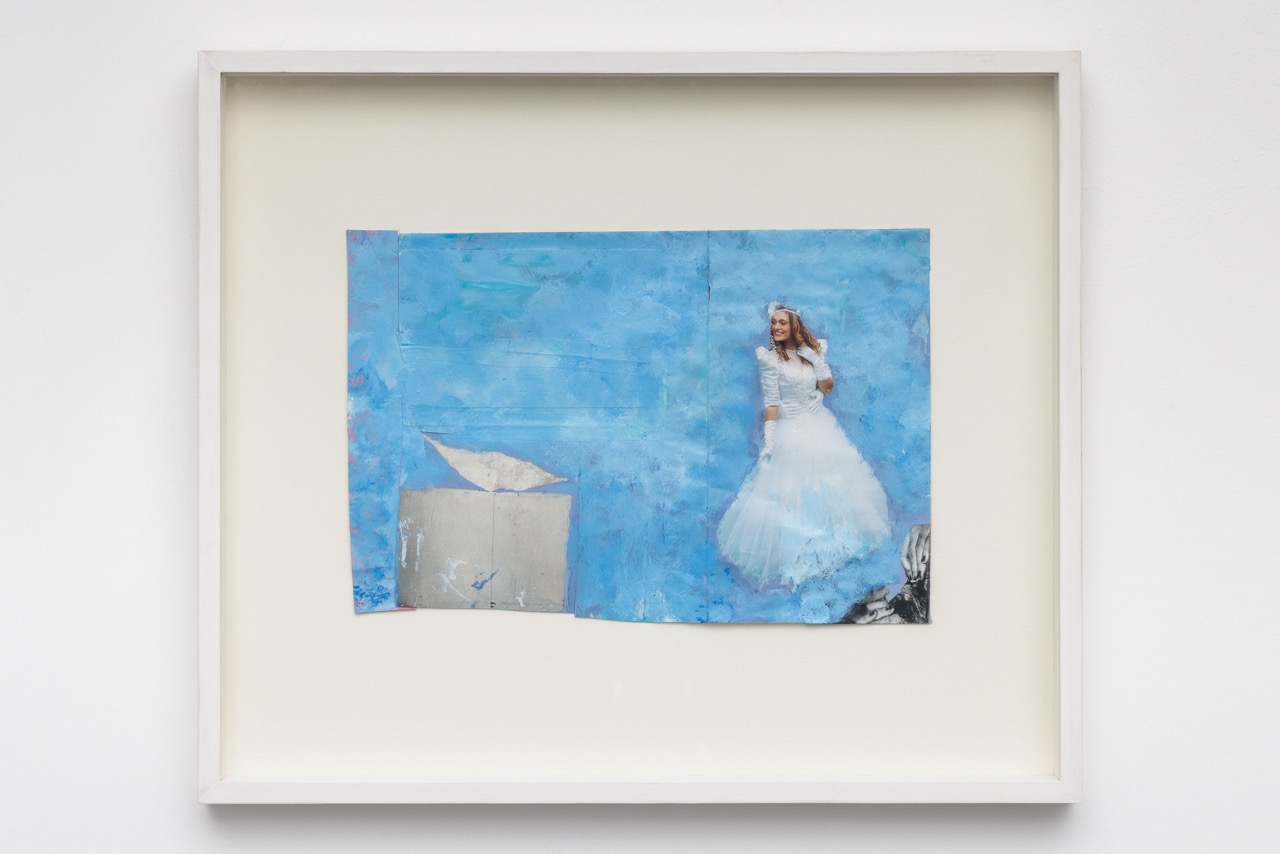
Focus Franz West
6/09/2024 — 21/04/2025
Heidi Horten Collection
Hanuschgasse 3, 1010 Wien
What can sculpture be today?
The exhibition Focus Franz West is a survey of the multifaceted work of Austrian artist Franz West, who challenged and playfully subverted traditional genre concepts. West’s creative universe is all-encompassing: his oeuvre includes drawings, collages, posters, videos, and, most notably, works dedicated to the principle of participation and an expanded concept of sculpture.
The centerpiece of the exhibition is a work that is a new addition to the collection: Franz West’s nine-part series of collages for the 1990 Biennale, which takes an ironic look at the dialogue between artwork and viewer. The series is a sequel to his earlier Passstücke (Adaptives), portable sculptures that function as a temporary extension of the human body and invite the recipient to interact with them.
Franz West, Biennale Zyklus 1, 1990, Mischtechnik, Heidi Horten Collection, Courtesy Franz West Privatstiftung
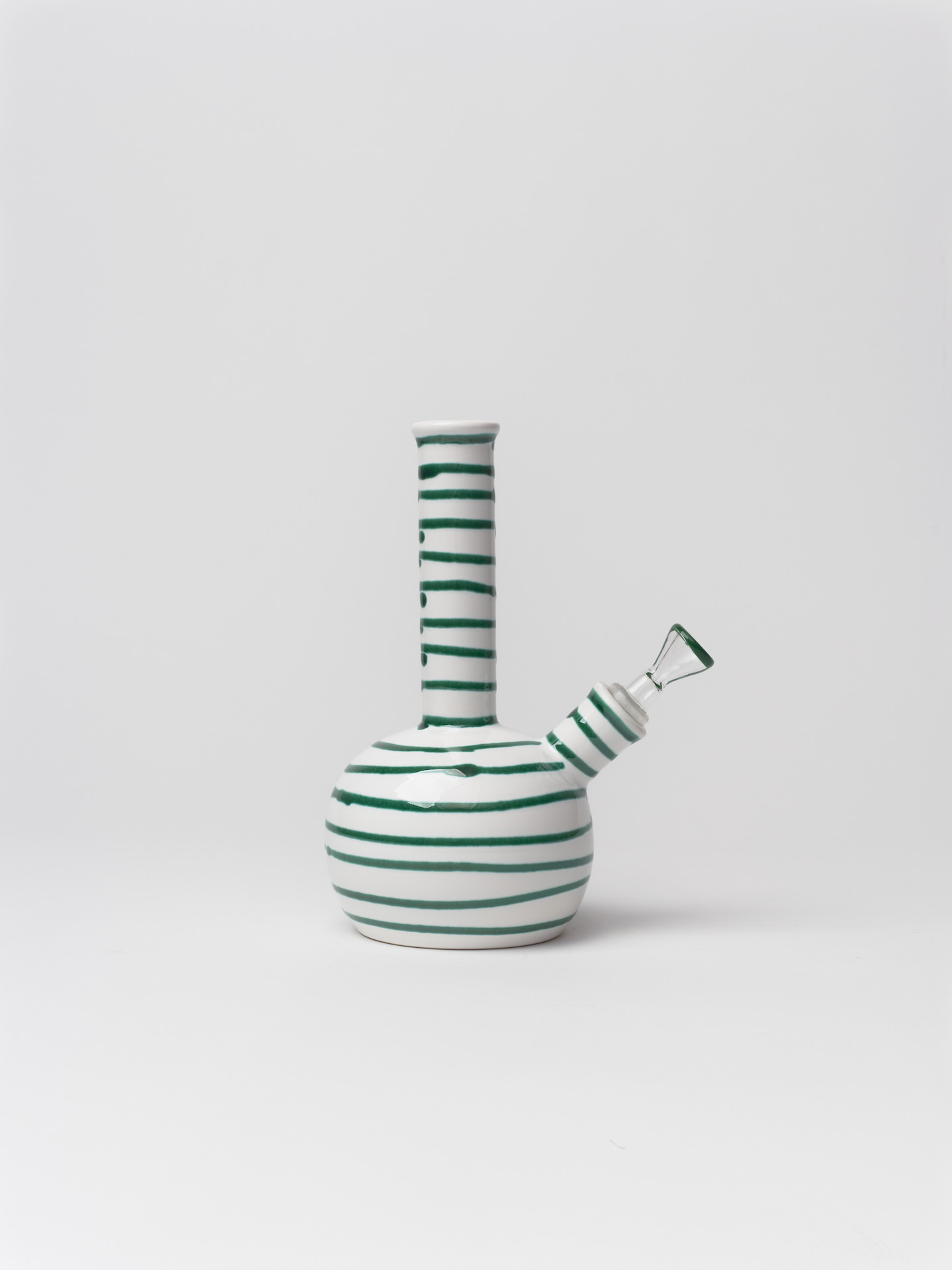
AUT NOW - 100 × Austrian Design for the 21st Century
18/09/2024 — 18/05/2025
MAK – Museum für angewandte Kunst
Stubenring 5, 1010 Wien
100 objects, 100 designers, 25 years, 25 categories, 1 country: The MAK exhibition AUT NOW: 100 × Austrian Design for the 21st Century provides a varied overview of the diversity and innovation in Austrian product design in the new millennium on the basis of 100 design objects. Each of the 25 thematic categories—from A for “Alpine” to Z for “Zeitgeist”—contains four objects that are representative of the wide range of things designed and produced in Austria from the year 2000 to the present day. They are all particularly remarkable examples of Austrian product design—role models for the 21st century. AUT NOW extends an invitation to admire and appreciate the functional, conceptual, and poetic qualities of contemporary design and discover surprising details in familiar things.
“Ideally, contemporary product design should represent a dynamic and holistic approach that revolves around the needs of contemporary society and the environment,” according to MAK Curators Sebastian Hackenschmidt and Marlies Wirth, who developed the exhibition together with Georg Schnitzer and Peter Umgeher, founders of the design studio Vandasye. With their exhibition series Design Everyday held during VIENNA DESIGN WEEK since 2017, Vandasye has regularly turned its attention to Austrian product design, identifying ideas that propose ambitious and inspiring but also sensible solutions to improve everyday life.
The 25 categories define the route through the exhibition, while allowing an indepth response to the question of what characterizes product design today. “Good design” must take into account social challenges and innovative ways of organizing work, as well as new production techniques, distribution channels, and marketing opportunities. Formal, material, typological, and technological criteria play just as much of a role as ergonomics, social and environmental considerations, and the preservation of resources. The emotional content of objects, characterized by “maximum rizz”—wit, creativity, and charisma—is also essential.
Using these categories AUT NOW creates a “school of seeing” on key aspects of product development and the design process that mostly remain invisible to users. The full spectrum of contemporary products is represented in the exhibition—from furniture, domestic appliances, tools, and lighting to accessories and consumer electronics to design for personal care, health, work, mobility, and much more.
From A for “Alpine” to Z for “Zeitgeist”
The categories should be understood as general characteristics of the chosen objects. For instance, “Alpine” subsumes the canon of forms and types that is widespread in the Alps and unmistakable in a wide range of practical objects: a chair, avalanche equipment, and even a bong.
“Material Opportunities” explores the role played by the choice of material and the unexpected possibilities that can arise with the right material—such as unbreakable eyeglass lenses or an edible dog bowl. “Re-Typification” reveals the surprising designs of supposedly unchangeable everyday objects like a ladder or a coat hanger, whereas “Empowerment” contains projects that give their users agency, such as cutlery for children with an age-appropriate design. And the “Invisible” category presents material or functional qualities that remain unseen for the user, in objects like a water bottle or an acoustic panel. Unexpected juxtapositions can be found in almost every category— when it comes to using existing pre-products or intentional Lo-Tek, or when reviewing circular design strategies that make systemic change possible.
With the chosen objects, designers, and manufacturers, the curatorial team sought to represent a range of different approaches, generations, and branches. Self-initiated experiments are presented alongside the production lines of major companies, technological innovations alongside traditional handicraft, and serial products alongside limited editions or pieces that have long been discontinued. Design from the early 2000s is part of the exhibition, as are prototypes that are currently in development, products by established designers and manufacturers, as well as projects by the next generation of designers. Almost a quarter of the exhibits in the show are from the MAK’s own collection; most pieces on display are loans, with the intention to add some of them to the collection on the occasion of the exhibition.
ALPIN Gmundner Keramik, Bong, 2023 Bong Gmundner Keramik © MAK/Christian Mendez
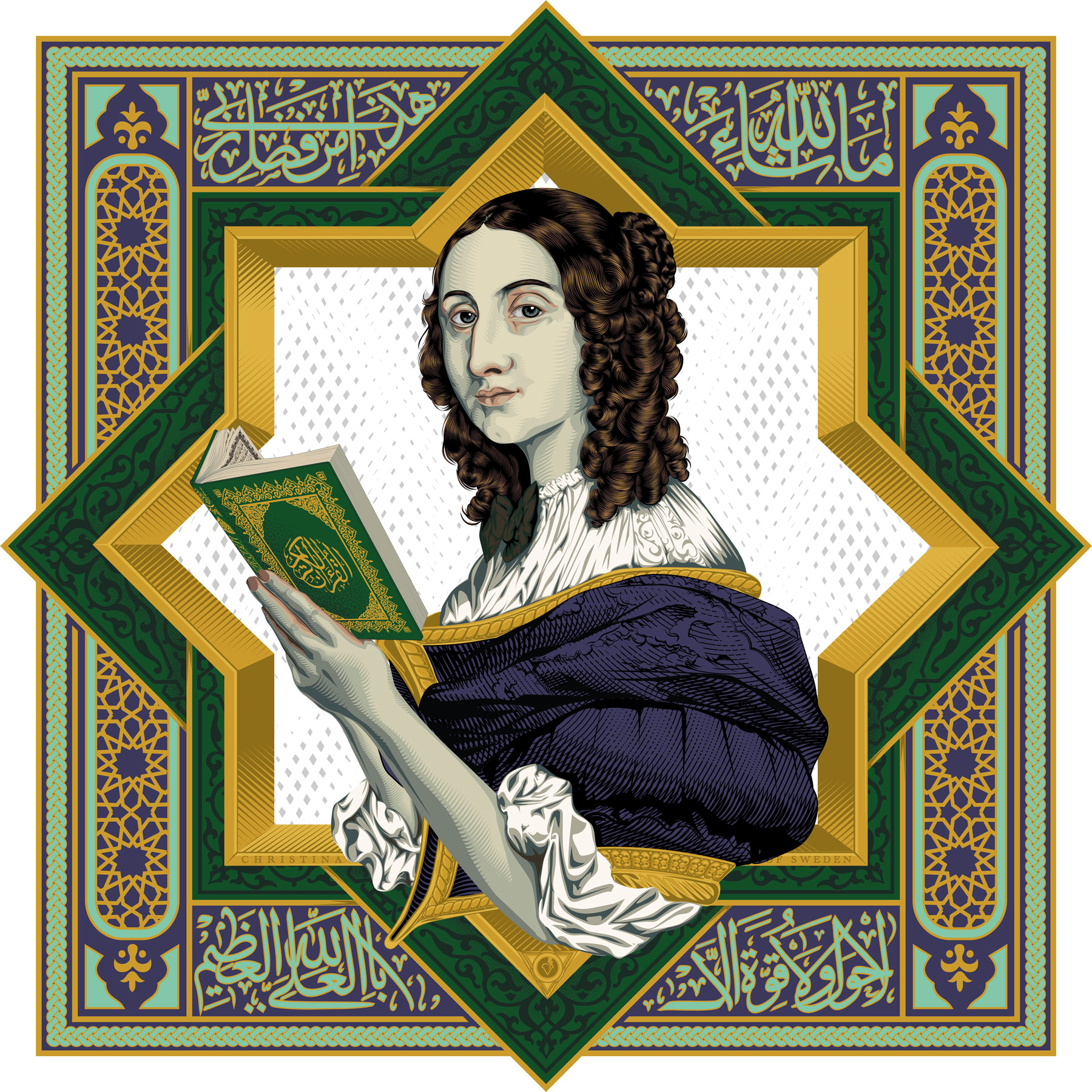
The European Qur'an
18/09/2024 — 24/08/2025
Weltmuseum Wien
Heldenplatz, 1010 Wien
What role does the Holy Scripture of Islam, the Qurʾān, play in the history of European thought? How has it been read and understood in Europe since the first translations in the Middle Ages? A special exhibition opening in autumn 2024 at the Weltmuseum Wien is dedicated to these questions. It will illustrate the diverse ways in which the Qurʾān has been experienced, read, and interpreted in Europe. With original historical artefacts, contemporary works of art, and media installations, the exhibition shows the significance of the Qurʾān in the lives of Europeans. It was developed in collaboration with the European Research Council (ERC) Synergy Grant Project “The European Qurʾān. Islamic Scripture in European Culture and Religion 1150–1850 (EuQu)”.
Marwan Shahin, One Thousand Years 2024 © Marwan Shahin
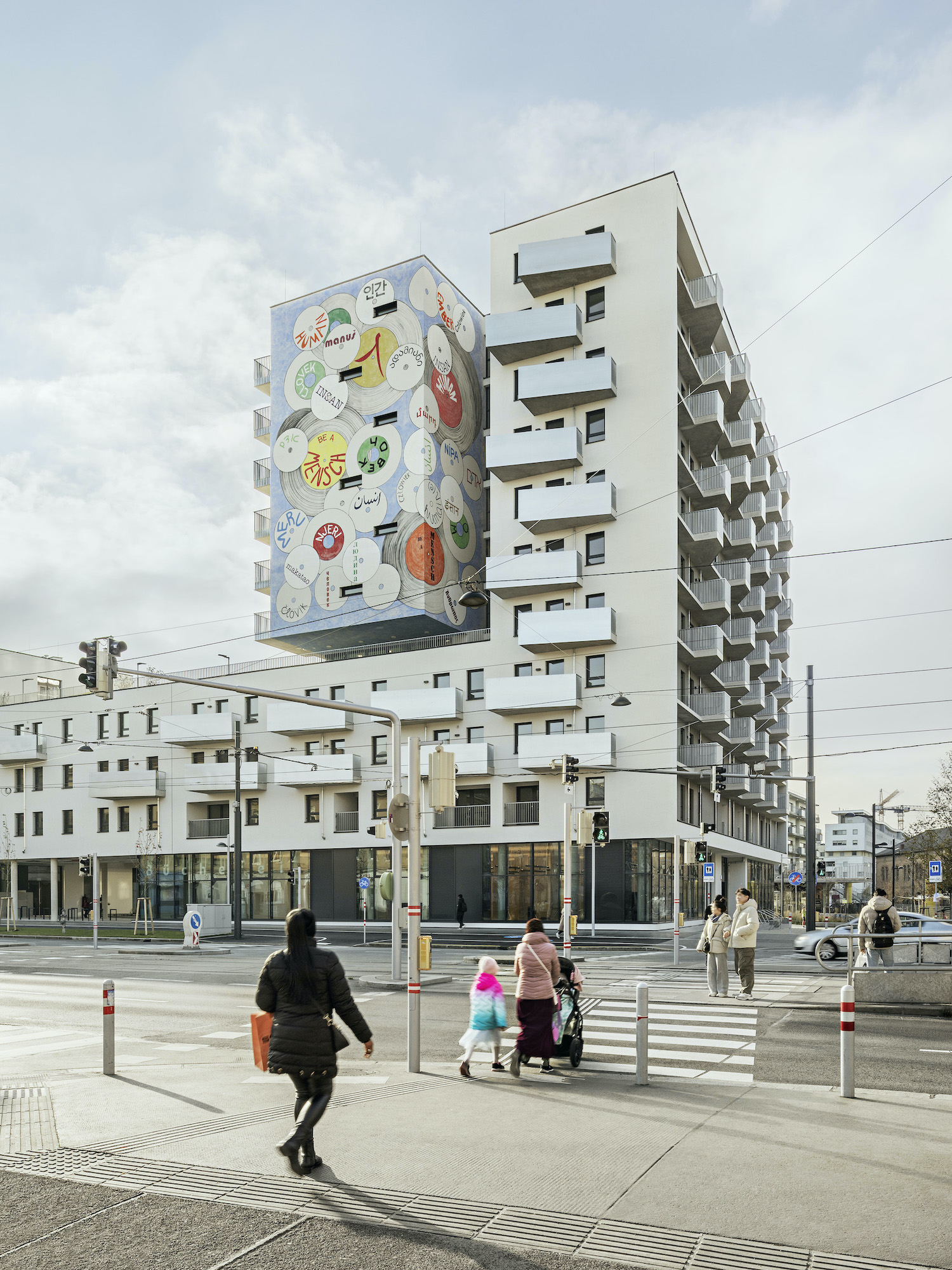
Be a mensch: Johanna Kandl
26/09/2024 — 26/09/2026
KÖR Kunst im öffentlichen Raum Wien
Nestroyplatz 1/1/14, 1020 Wien
With a wall design for the new municipal building in Laxenburger Strasse (architecture: Pichler & Traupmann Architekten), the City of Vienna is continuing its long tradition of art in (municipal) buildings. The artist Johanna Kandl won the competition organized by KÖR Wien together with WIGEBA, Wiener Gemeindewohnungs Baugesellschaft m.b.H. With the design “Be a mensch”, the artist commemorates the work and legacy of Willi Resetarits (1948-2022). The quote stands for the musician and human rights activist, who knew better than almost anyone how to bring together the most diverse social and cultural groups. Borrowed from Yiddish into American English, the word “mensch” refers to a person of honesty and integrity.
Johanna Kandl takes up this appeal to humanity and the play with language as an expression of diversity and inclusion in her mural for the new municipal building at Laxenburger Straße 4/4A, which will be named after Willi Resetarits in the future.
Be a Mensch, Johanna Kandl, Photocredits © Hertha Hurnaus
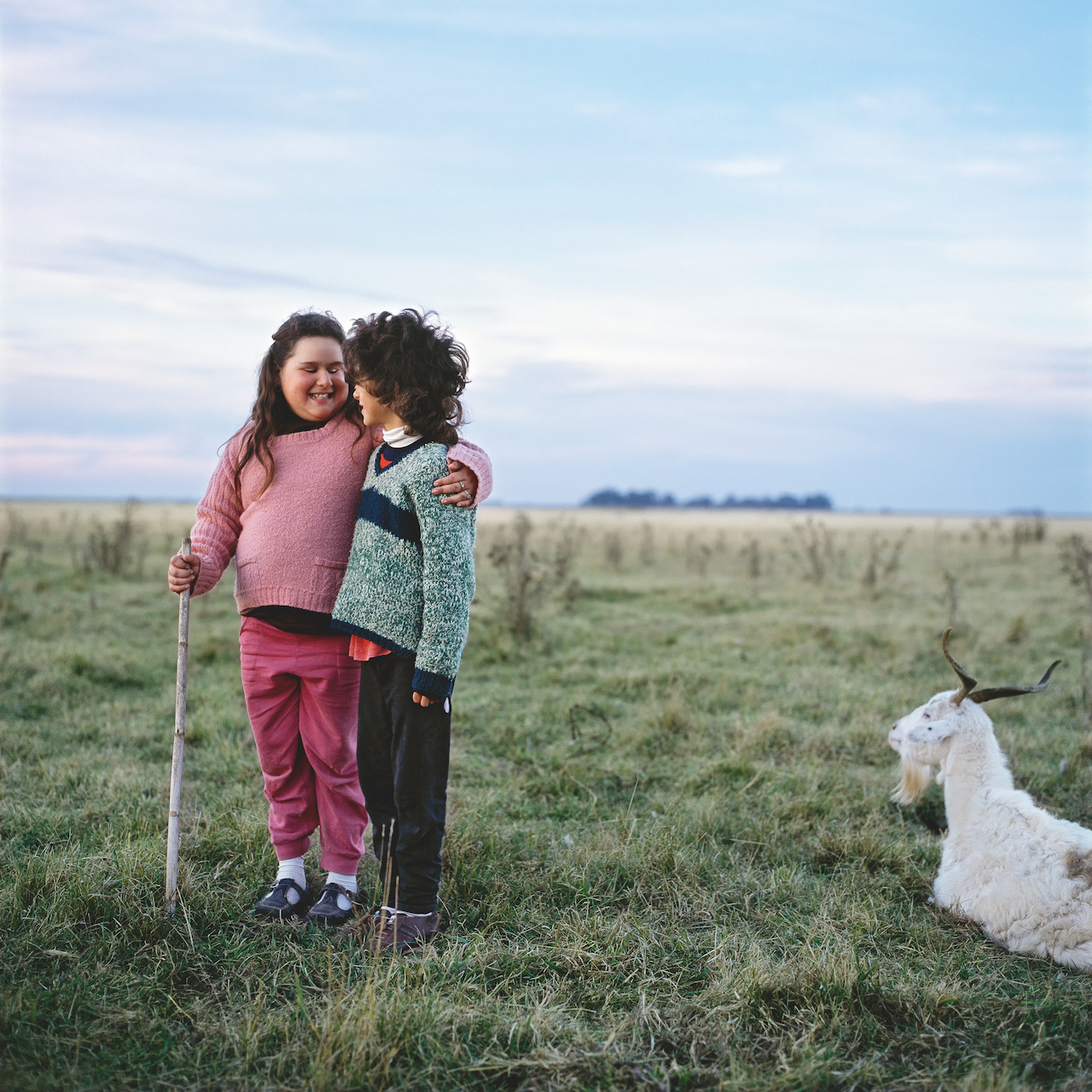
In the spirit of friendship
27/09/2024 — 4/08/2025
Dom Museum Wien
Stephansplatz 6, 1010 Wien
The subject of friendship is thoroughly existential and timeless, cutting to the bone of human existence. A theme that spans all historical periods and across all regions of the world. At the same time, the subject seems particularly relevant right now: In light of the threatening state of the world, the countless crises, conflicts, and increasing social divisions, Dom Museum Wien’s decision to dedicate this exhibition to a conciliatory interpersonal subject is all the more important.
“In times when polarization in politics, society, and social media as well as rampant egotism on Dom Museum Wien that placed connective elements, the give-and-take of me-and-you, and the dialogical principle front and center”, says museum director Johanna Schwanberg, who curated the exhibition together with co-curator Klaus Speidel. The exhibition title deliberately shies away from purely positive, often idealized connotations of the word “friendship” as the harmony of two souls, to signalize that this is no romanticized “sunshine-and-rainbows” presentation. “In the Spirit of Friendship” also addresses problematic aspects related to this type of relationship.
Friendship is a basic human need: relationships with others, spiritual closeness, and chosen family shape our lives. The exhibition deals with the universal meaning of friendship as part of human social interaction – on a personal or political level. Facets of friendship are explored via graphics, painting, sculpture, photography, video, and installation art. In addition to national and international loans and new commissioned works, the exhibition also offers insights into the collections of Dom Museum Wien.
Like in all preceding special exhibitions at Dom Museum Wien since its reopening in 2017, “In the Spirit of Friendship” doesn’t tell a chronological story but rather uses contrasts and juxtapositions of works from various periods of art history. The sculptures, paintings, drawings, photographs, and video installations span a historical arc from the Middle Ages to the present day. The selection comprises works from the historic holdings of the museum and the Otto Mauer Contemporary Collection as well as high-caliber loans from national and international collections, museums, abbeys, and galleries. The exhibition also incorporates several site-specific commissions and new acquisitions from numerous contemporary artists.
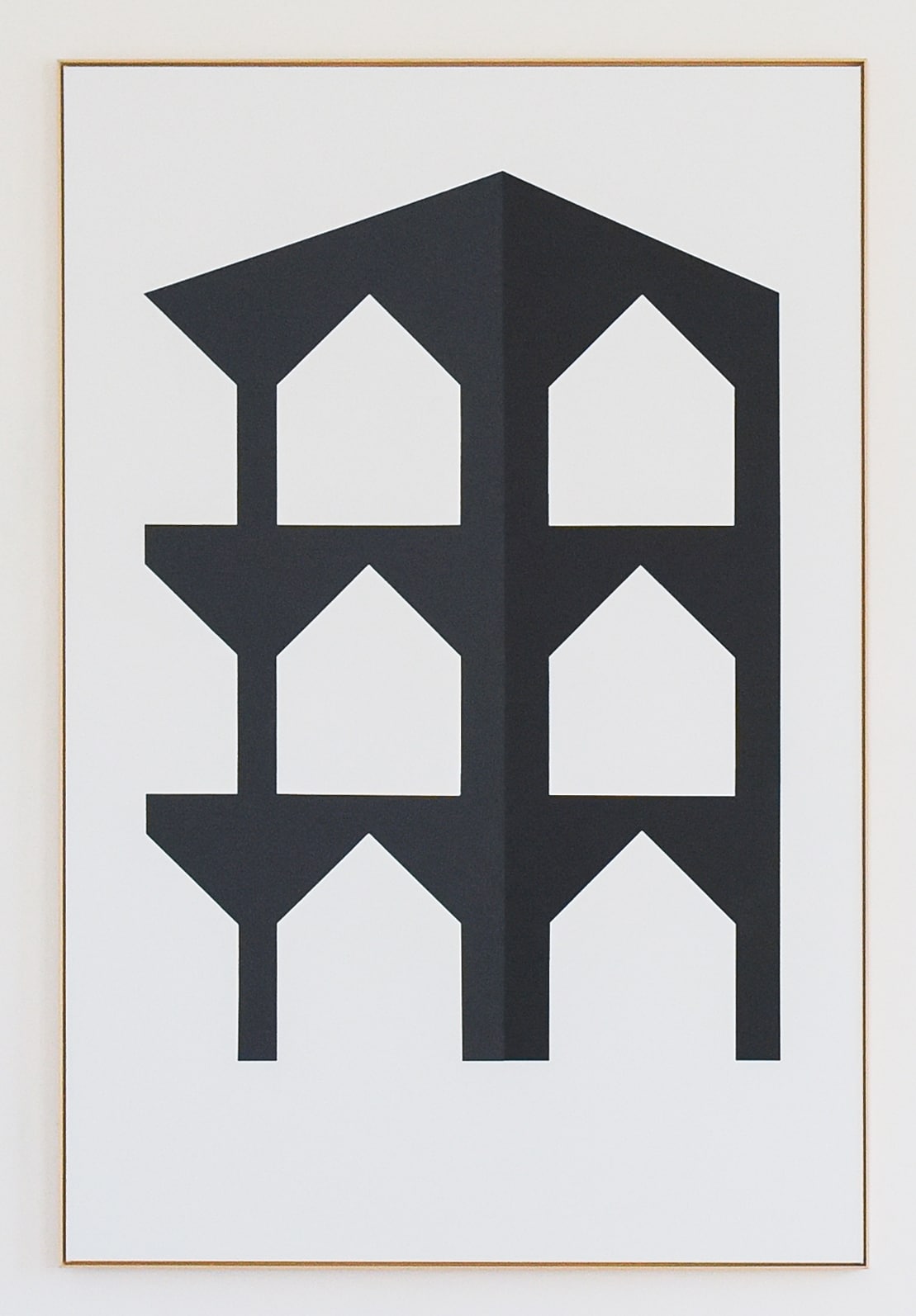
TWO HOUSES: Jürgen Bauer, Frederick Kiesler
13/11/2024 — 18/04/2025
Österreichische Friedrich und Lillian Kiesler-Privatstiftung
Mariahilfer Straße 1b/1, 1060 Wien
The exhibition contrasts two houses that could not be more different. In his paintings, Jürgen Bauer reduces the idea of the house to a universal symbol: the pictogram of the house with a pitched roof, a square as the basic shape with a triangle above as the roof, formed from the same geometric figures over and over again.
Jürgen Bauer’s large-format paintings of houses, executed in acrylic on canvas, are contrasted with a series of small-format drawings of the Endless House of 1959 from Friedrich Kiesler’s estate.The Endless House is a true icon of 20th century visionary architecture and an early reference point for biomorphic architecture. Endless, not infinite, meant for Kiesler that “all ends meet” in his house, with the walls, ceilings and floors merging into one another and creating the illusion of an endlessly flowing spatial continuum.
The title of the exhibition ‘TWO HOUSES’ is an ironic allusion to a show at the Museum of Modern Art in New York, in which the sculptor-architect Frederick Kiesler was compared to the engineer-architect Richard Buckminster Fuller.
Jürgen Bauer, House Repetition 3D-9, 2020, acrylic on canvas, 209 x 138 cm, Photo: Joanna Pianka © Bildrecht, Vienna 2022
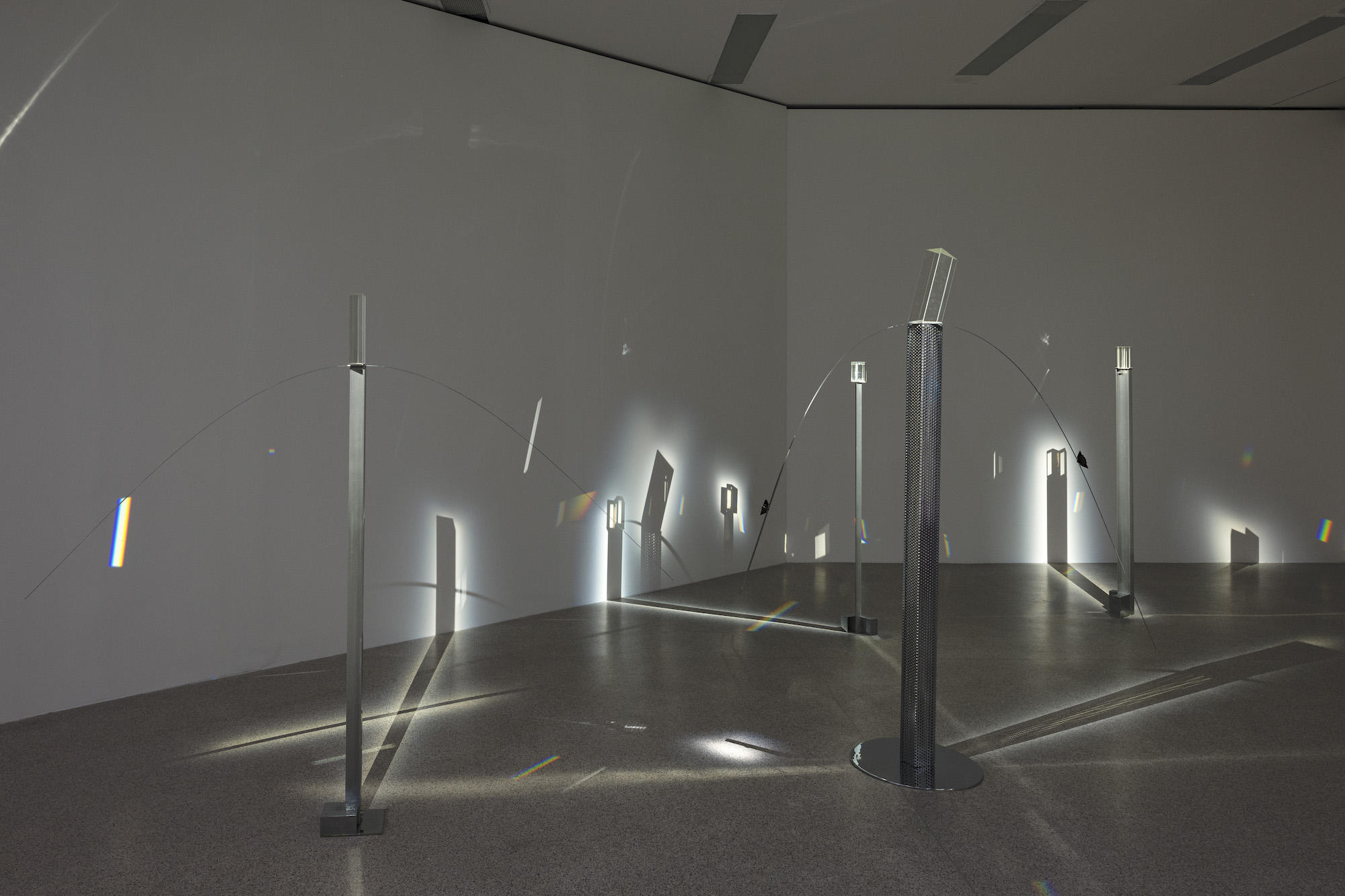
Liliane Lijn: Arise Alive
15/11/2024 — 4/05/2025
mumok – Museum moderner Kunst Stiftung Ludwig Wien
Museumsplatz 1,1070 Wien
This survey exhibition of the work of Liliane Lijn is the most comprehensive institutional solo presentation of the artist thus far. Born in New York in 1939 and based in London since 1966, Lijn has been working at the interface of visual art, literature, and science for more than six decades and has created an extensive oeuvre that includes sculptures, installations, collages, paintings, videos, and performances. Lijn’s multimedia practice has its origins in the kinetic art of the late 1950s as well as in her exploration of Surrealist ideas, ancient mythology, and eastern philosophy. Even her earliest works reveal an interest in unconventional artistic materials—an interest that continues to this day. In 1961, Lijn made first works from Perspex, in which she experiments with reflection, movement, and light. “Electric lights flash on and off plexiglass constructions, creating a tangle of transparent shadows called Echo Lights by the artist,” writes the American poet John Ashbery in 1963 about her exhibition in Paris. “Her Vibrographs are wheels revolving too fast for you to read the words printed on them, but perhaps they affect you unconsciously like subliminal advertising.”
Liliane Lijn Four Figures of Light, 1978 Installation Photo: Georg Petermichl / mumok © Bildrecht, Wien 2024
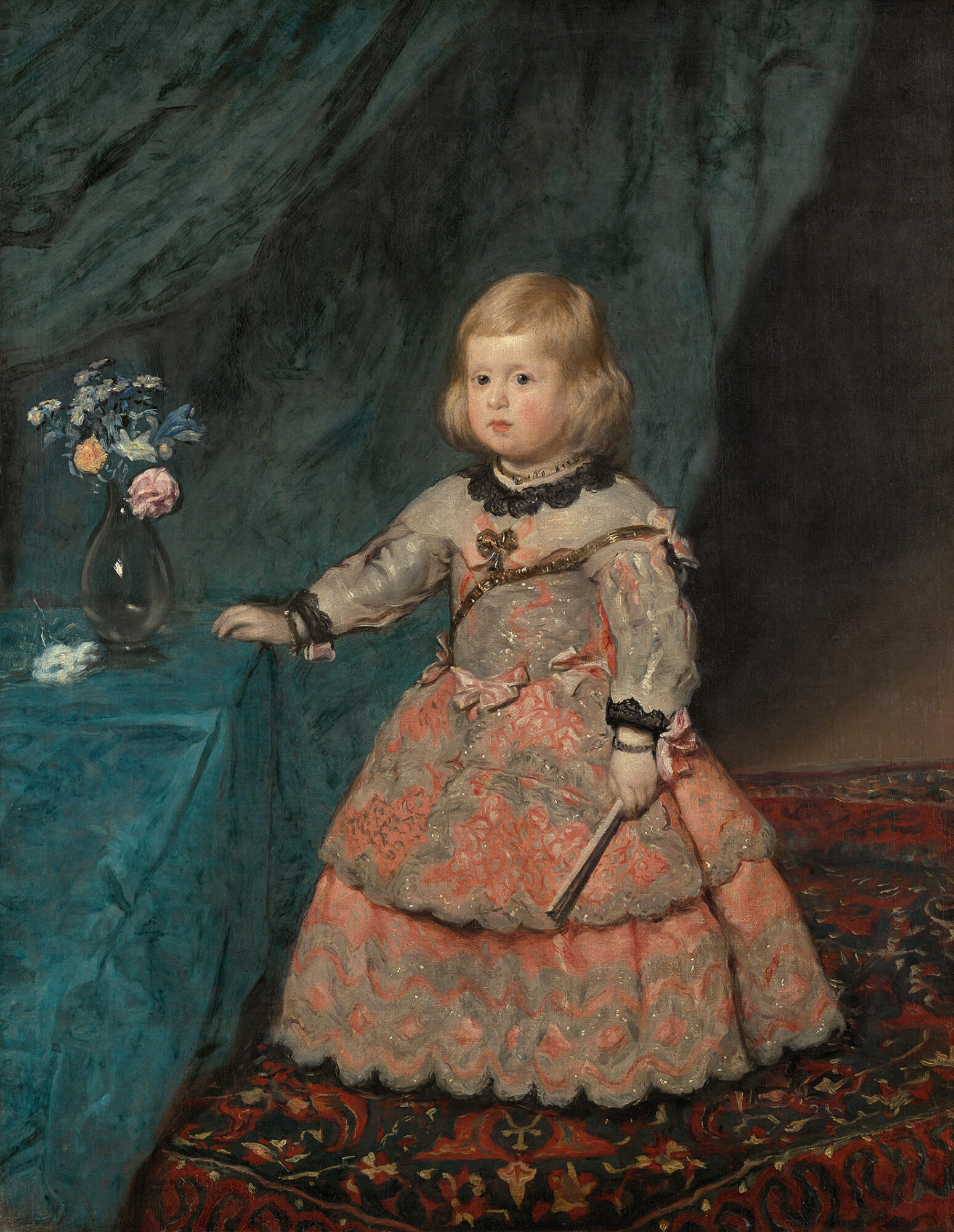
Matter of opinion #29: Mengs and Velázquez
17/01/2025 — 5/10/2025
KUNSTHISTORISCHES MUSEUM WIEN
Maria-Theresien-Platz, 1010 Wien
The special presentation Ansichtssache, which regularly showcases different works temporarily within the permanent exhibition of the Paintings Gallery at the Kunsthistorisches Museum, highlights in its 29th edition a masterful portrait of the nine-month-old Princess Marie-Therese of Bourbon-Sicily. This presentation invites visitors to explore the work of two celebrated court artists, Anton Raphael Mengs and Diego Velázquez, in greater depth.
Long kept in storage, the portrait of the infant princess has regained its extraordinary painterly quality thanks to a recent restoration. This restoration, along with the accompanying art historical analysis, sheds new light on Mengs: more than previously recognized, he drew inspiration from Diego Velázquez, his predecessor as court painter in Madrid. Additionally, the portrait’s strikingly vivid naturalism reflects a changing perception of childhood in the late 18th century.
Infanta Margarita of Spain in a Pink Dress Diego Velázquez (1599–1660) 1653/54 Vienna, Kunsthistorisches Museum © KHM-Museumsverband
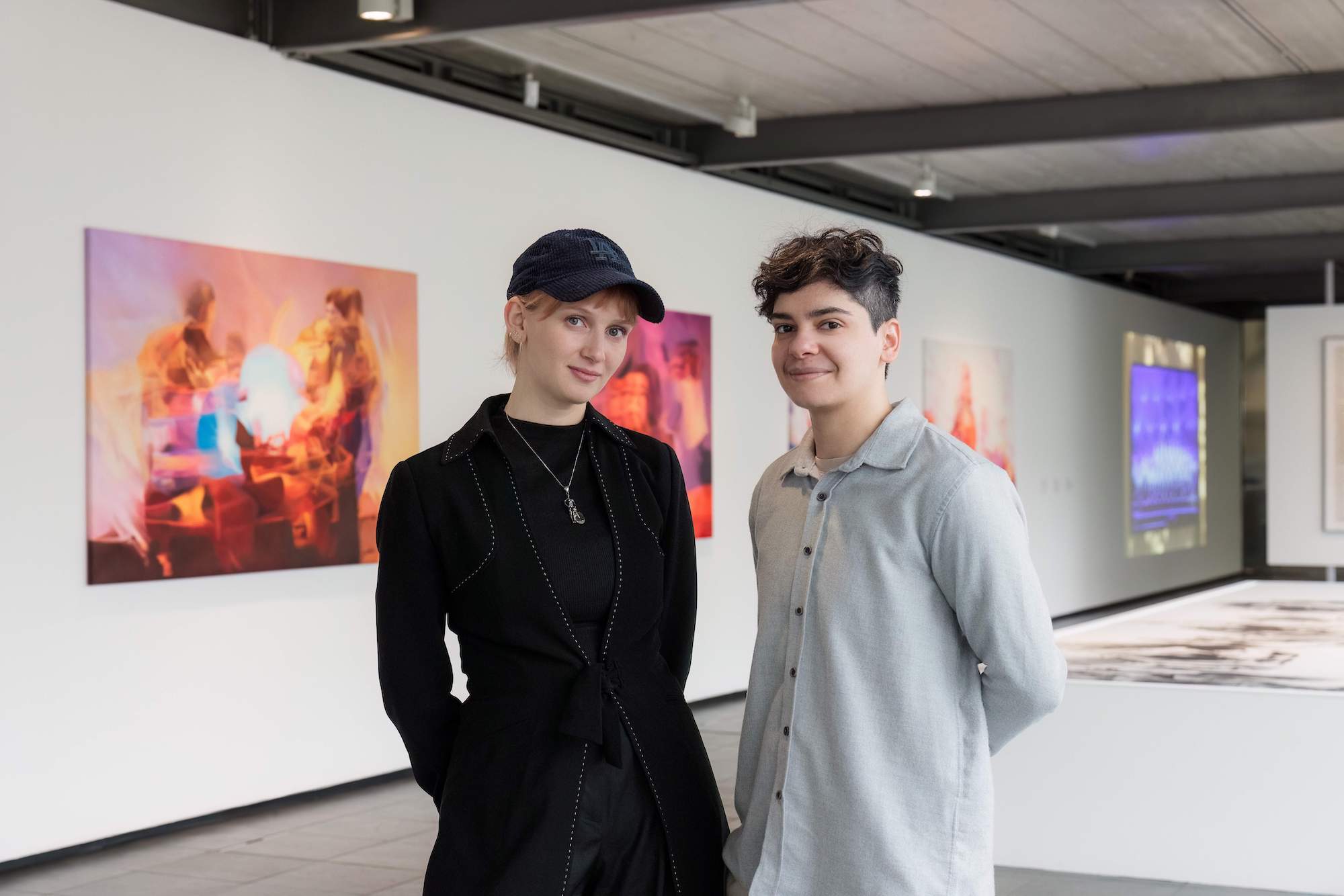
Kunsthalle Wien Preis 2024
23/01/2025 — 20/04/2025
Kunsthalle Wien Karlsplatz
Treitlstraße 2, 1040 Wien
The exhibition of the Kunsthalle Wien Preis 2024 presents the two prize-winners Rawan Almukhtar (Academy of Fine Arts Vienna) and Ida Kammerloch (University of Applied Arts Vienna).
The Kunsthalle Wien Preis seeks to support emerging artists living and working in Vienna and to promote discourse on contemporary art via an annual collaboration with the Academy of Fine Arts Vienna and the University of Applied Arts Vienna. The selected artists each receive a € 3,000 prize in addition to a production budget towards the exhibition at Kunsthalle Wien Karlsplatz. The exhibition will be accompanied by a publication with texts by Alicja Melzacka and Rijin Sahakian.
Ida Kammerloch und Rawan Almukhtar, Kunsthalle Wien 2025, Foto: kunst-dokumentation.com
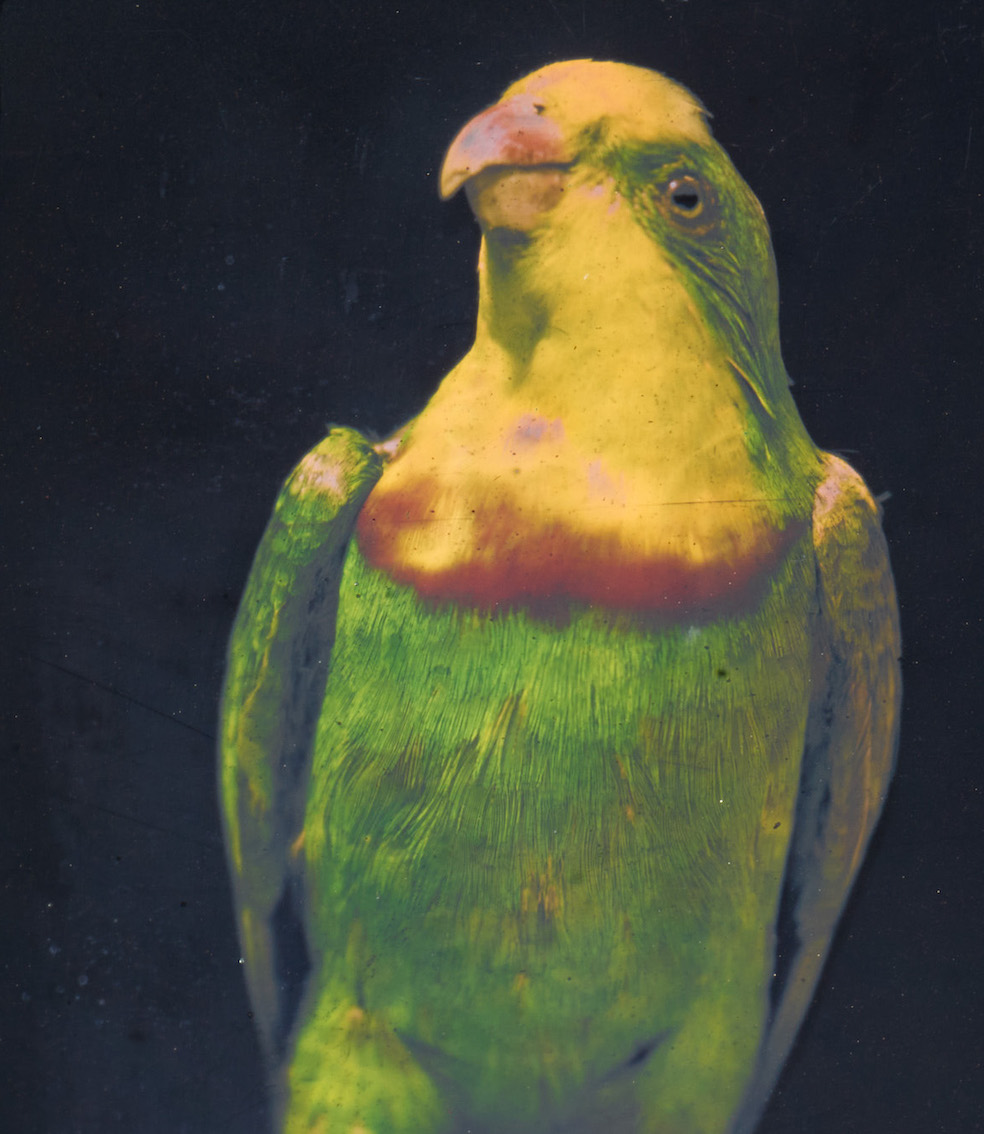
True Colors: Color in Photography from 1849 to 1955
24/01/2025 — 21/04/2025
Albertina modern
Karlsplatz 5, 1010 Wien
How did color get into photography? The exhibition True Colors – Color in Photography from 1849 to 1955 answers this question with outstanding works from the ALBERTINA Museum’s photo collection.
The desire for color in photography has dominated the world of photography from the very beginning. True Colors traces the development of color photography, from the first experimental techniques in the 19th century to generally applicable analog color photography.
Detail: Richard Neuhauss, Papagei, 1899, ALBERTINA, Vienna – Permanent loan of Höhere Graphische Bundes-Lehr- und Versuchsanstalt © Photo: ALBERTINA

The infinite analysis. Psychoanalytical schools after Freud
1/02/2025 — 30/06/2025
Sigmund Freud Museum
Berggasse 19, 1090 Wien
Psychoanalysis – which can hardly be spoken of in the singular – currently presents itself as an integrative discipline that is at the same time fragmented and at times standardising in schools: It is a lively and diverse field of research and clinical practice. Today, theoretical approaches are combined with current medical and neuroscientific approaches and psychoanalytic treatments are empirically researched. Psychoanalysis is also influenced by feminist criticism and by numerous discourses in the humanities and cultural studies, as well as by the various cultural contexts in which it is embedded as an international movement.
Exhibition view_Infinite Analysis, Sigmund Freud Museum, Photo, Wout Kichler
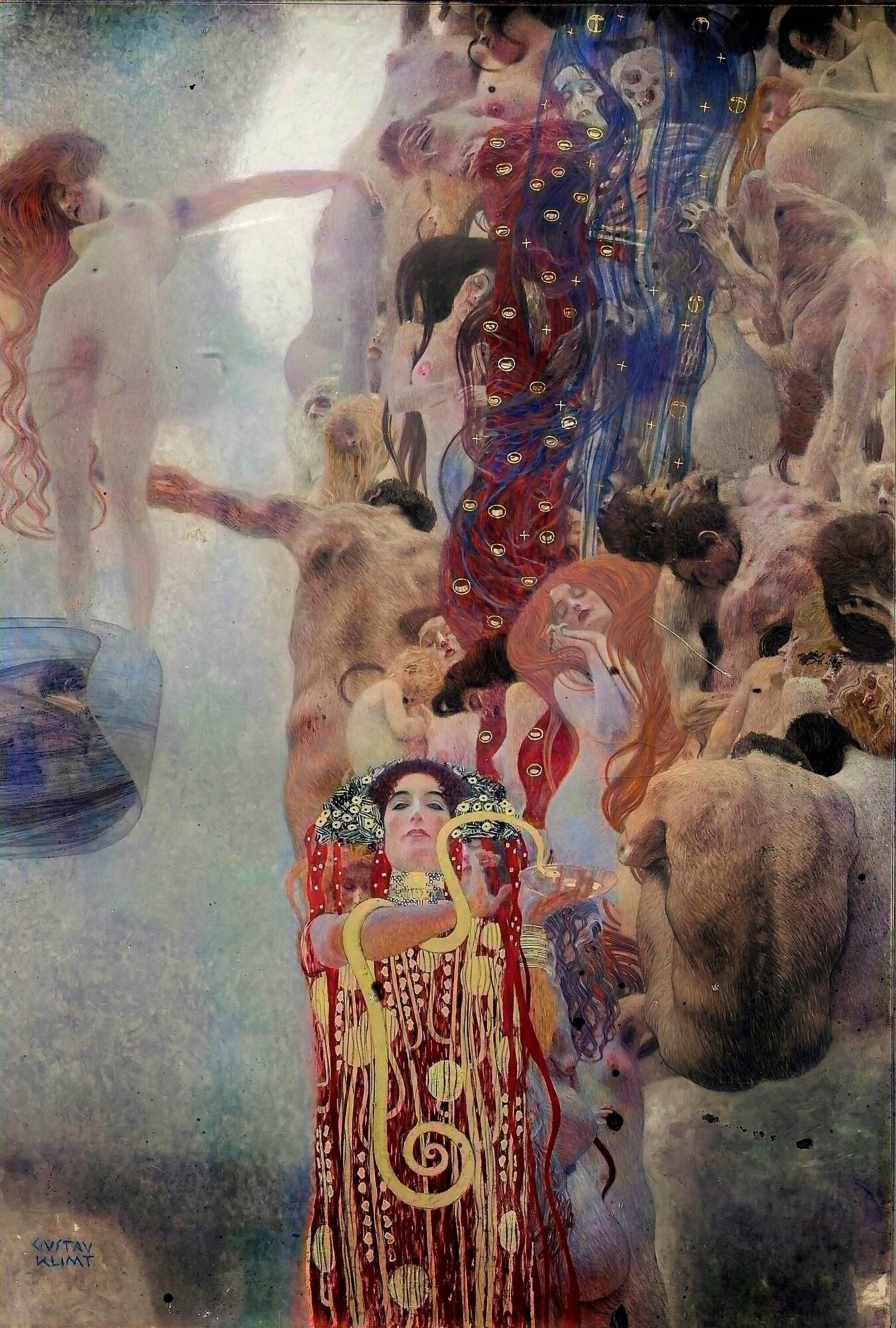
Gustav Klimt: Pigment & Pixel
20/02/2025 — 7/09/2025
Unteres Belvedere
Rennweg 6, 1030 Wien
Recent technological studies provide new insights into Gustav Klimt’s working methods and artistic practice. Looking beneath the surface of the paint layers reveals the creation process of his paintings, occasionally uncovering surprising deviations between the preliminary drawing and the final execution of the artworks.
The exhibition also explores the question of how Klimt created his legendary golden paintings. How did he apply gold to the canvas? Macro photographs confirm that Klimt used only precious gold leaf for his works. Among the highlights is his iconic painting Judith—one of the first pieces in which the artist experimented with gold.
Gustav Klimt, Faculty Painting "Medicine", 1901, Recolorization based on historical photograph (2021)Belvedere, Vienna / Image by Google
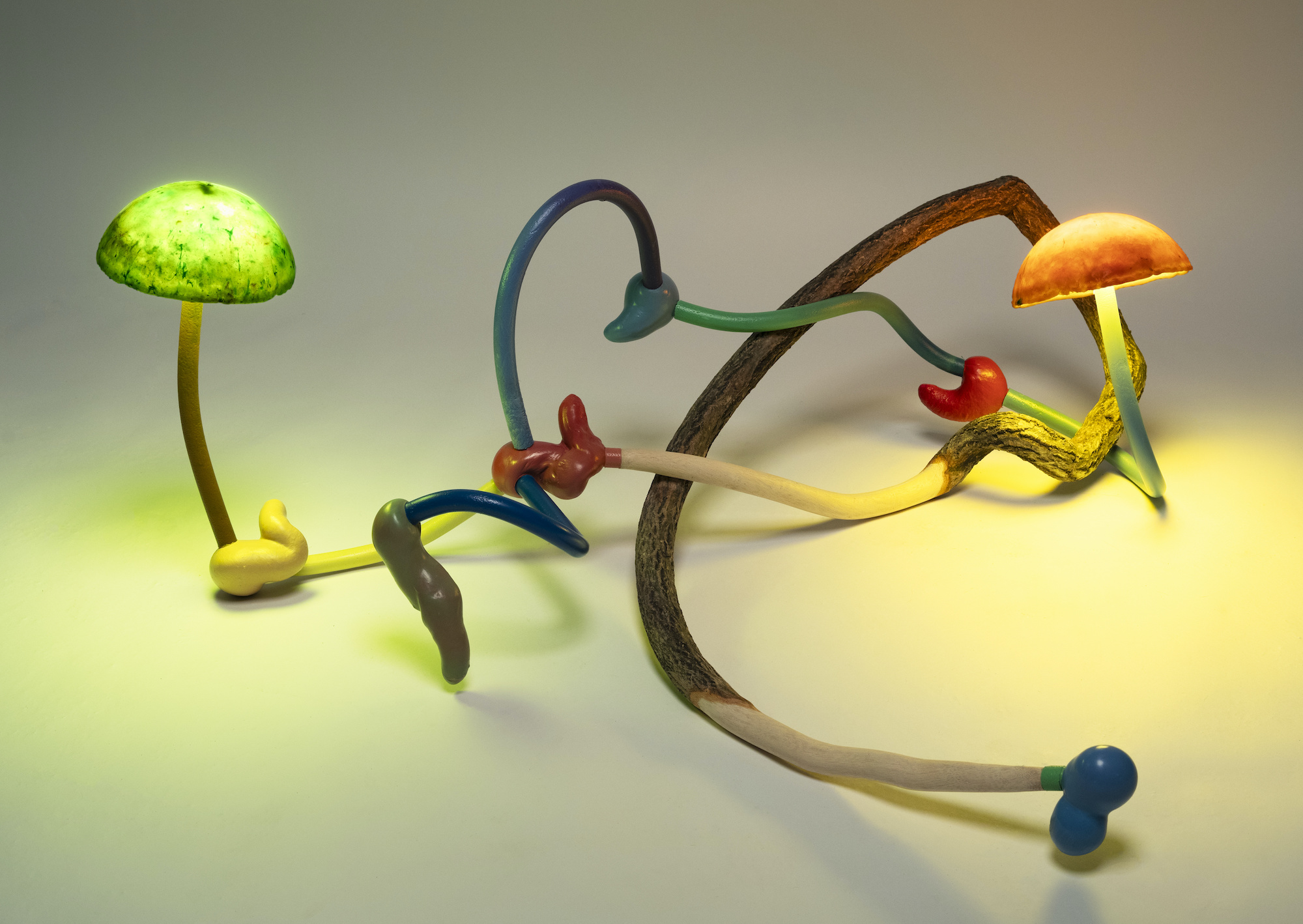
Mika Rottenberg: Antimatter Factory
27/02/2025 — 10/08/2025
KunstHausWien
Untere Weißgerber Straße 13, 1030 Wien
Mika Rottenberg (*1976) is a New York-based artist who combines film, architectonic installations and interactive kinetic objects in her practice to illustrate the absurdity of the seemingly limitless escalating production of goods and commodities in our contemporary hypercapitalist world. From pearl farming and food production through to the mass manufacturing of plastic articles in China, Rottenberg humorously points to the urgent need to spare resources, to consume less and live in a more sustainable manner.
The exhibition is a cooperation with the Museum Tinguely in Basel and the Lehmbruck Museum in Duisburg.
© Mika Rottenberg, Lampshare, 2024 © Mika Rottenberg, Courtesy the artist and Hauser & Wirth Photo: Pete Mauney

Plastic Matters
27/02/2025 — 25/05/2025
KunstHausWien
Untere Weißgerber Straße 13, 1030 Wien
With Plastic Matters, KunstHausWien is proposing a change of perspective on dealing with plastic: from a waste product to a valuable material. Under the motto ‘Long live plastic’, workshops on plastic recycling illustrate the diverse processes of recycling and raise our awareness of the growing plastic problem. Plastic remains and must be thought of as a valuable resource in the cycle.
The exhibition shows the possibilities and potential of the material beyond industrial recycling processes. Because plastic concerns us all.
© Gravel Mischung, Photo Tom
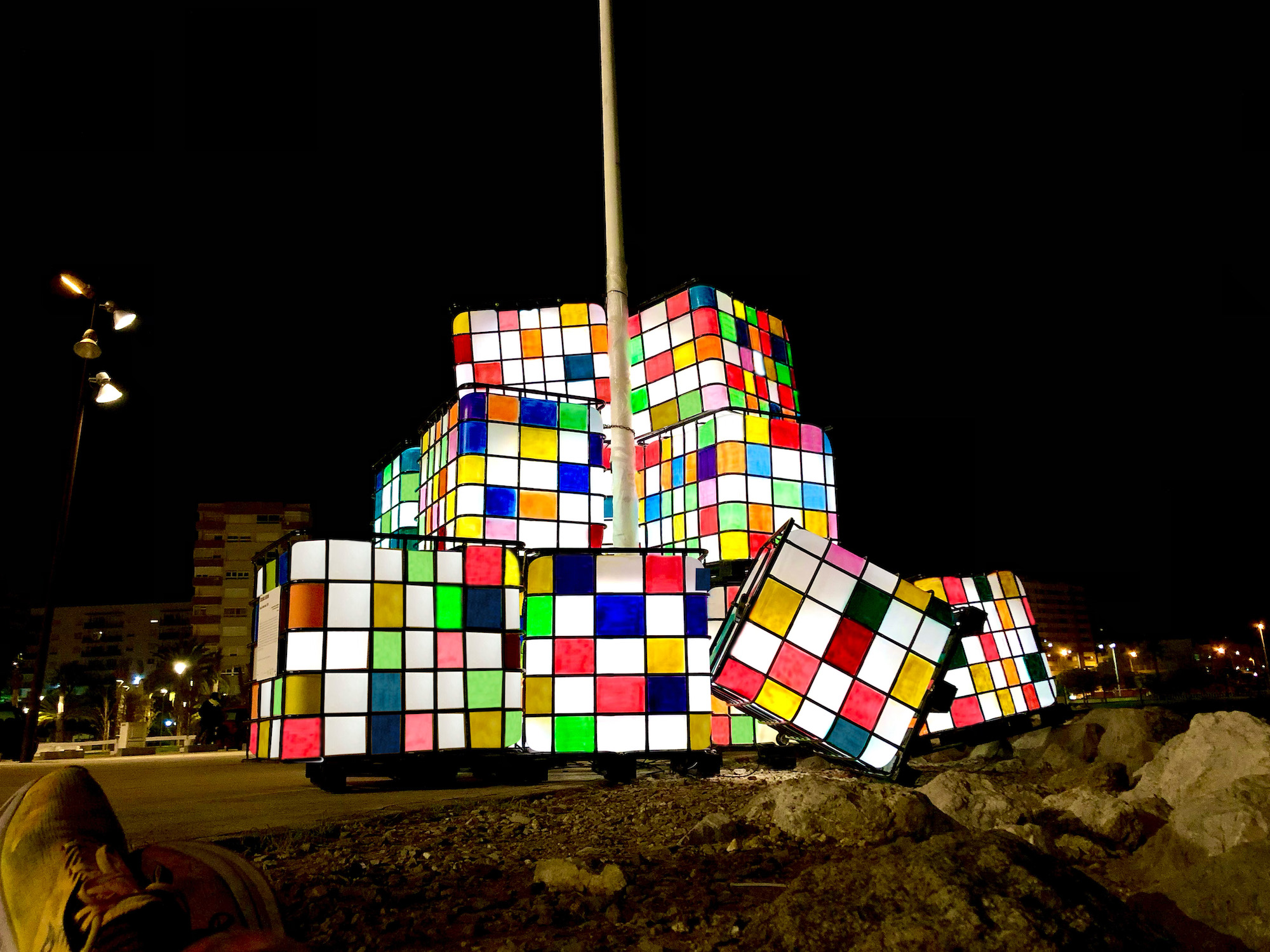
IMAGINE CLIMATE DIGNITY
1/03/2025 — 9/06/2025
Künstlerhaus Vereinigung
Karlsplatz 5, 1010 Wien
‘Climate dignity means, on the one hand, that all people have the right to live in a world in which their health, freedom and livelihoods are not affected by climate change. In terms of climate justice, this applies in particular to those people, communities and countries that are or will be most affected by the impacts of climate change and are therefore particularly worthy of protection. ‘Climate Dignity also emphasises that the effects of man-made climate change and the associated loss of biodiversity not only threaten human dignity, but also endanger nature. The underlying concept of ‘Climate Dignity’ thus places the interdependence of humans and nature at the centre of more than human relationships: anyone who violates the dignity of nature also damages human dignity.
Ada Kobusiewicz, Javier Viana, Alberto Lomas Atacama Fashion, 2024, Installation im öffentlichen Raum, Paseo Marítimo, Algeciras, Spanien, Foto: Ada
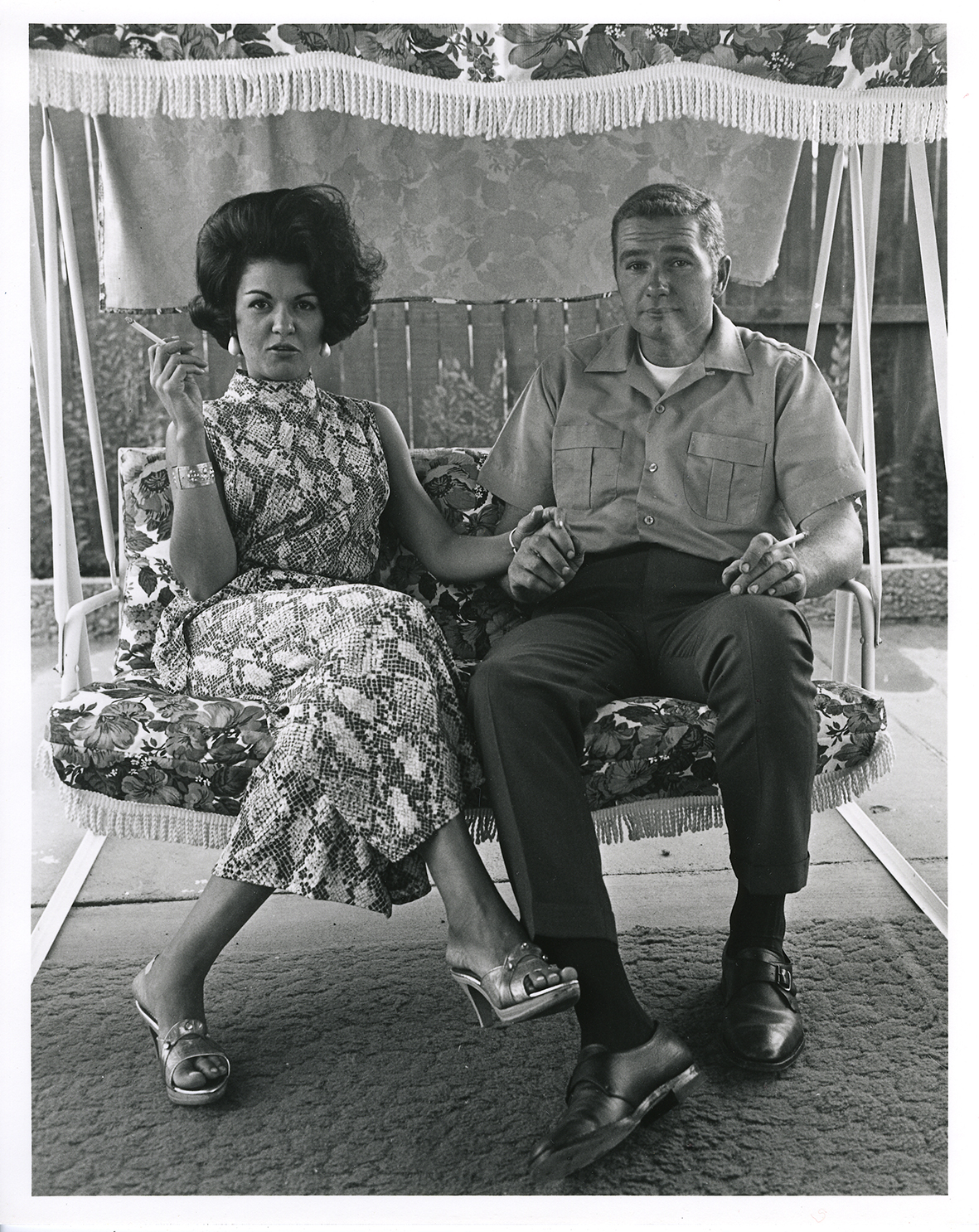
Suburbia: Living the American Dream
6/03/2025 — 4/08/2025
Architekturzentrum Wien
Museumsplatz 1 im MuseumsQuartier (Eingang Volkstheater), 1070 Wien
Suburbia traces the history of an ideal of life that – starting in the US suburbs – conquered the world and is incessantly reproduced by popular media. At the same time, the exhibition analyzes the contradictions of this model and its social and ecological consequences such as land consumption, soil sealing, and vacancy. The big question is: What happens next?
The American dream can be described with an image that seems to have stood still in time: a large house with a yard, swimming pool, and two cars in the garage. A quiet, safe place for the nuclear family, close to nature and in people-friendly surroundings. Suburbia carries us off into this world of ideas and images that has been hugely promoted by politics, business, and the entertainment industry. The cultural history of the single-family home has its origins in the upscale American residential areas of the early nineteenth century. After the Second World War, the typology was massively developed and rolled out on a broad scale. The exhibition sheds light on the economic, political, and social context of this rapid expansion in the USA and beyond. It becomes clear that the model is based on social, ethnic, and gender-specific segregation and takes up an enormous amount of space.
The exhibition, curated by Philipp Engel for the Centre de Cultura Contemporània de Barcelona (CCCB), was adapted for the Az W and expanded to include an Austrian focus. Even in Austria, a large share of the population still wants to realize their own version of this dream on the outskirts of the city. According to a recent study by the University of Natural Resources and Life Sciences, Vienna (BOKU), the proportion of highly sprawling areas in Austria increased fivefold between 1975 and 2020 – particularly due to detached single-family homes, large-scale industrial parks, and shopping centers. As a result, traffic areas are destroying the landscape, the rapidly advancing sealing is threatening biodiversity and food security, town centers are becoming deserted, and in an aging society people are sliding into isolation. The image of half-abandoned, aging houses and residential estates characterizes many parts of the country. Instead of building new ones, the question arises as to how the existing stock of these approximately 1.5 million single-family homes can be made usable for the future. Successful examples of conversions, repurposing, densification, or new forms of living and working are intended to demonstrate the enormous potential and attractive alternatives.
Bill Owens: Cleo and James Pruden, 1972, Photo: Bill Owens Archive, Milano
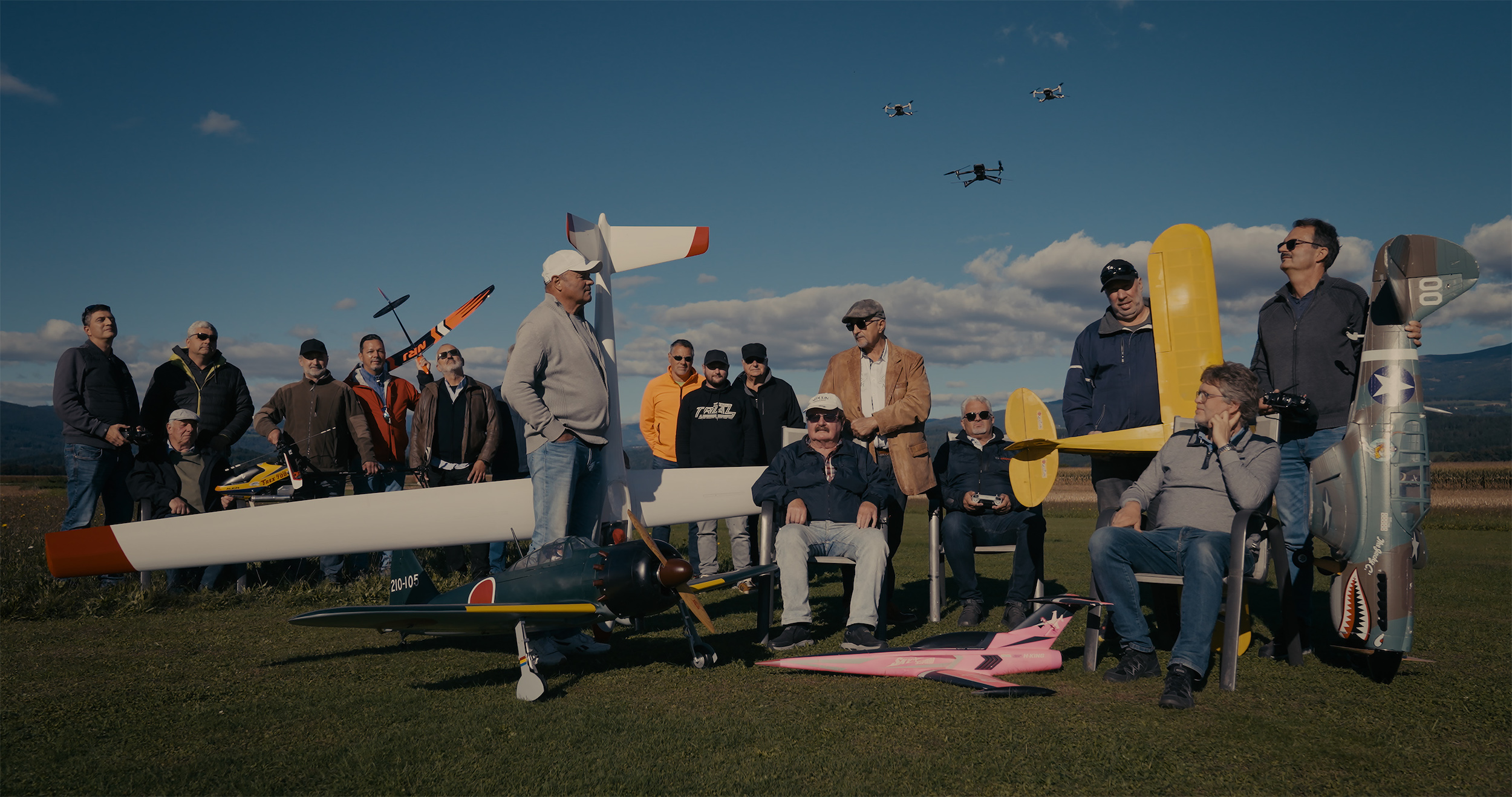
Wild Apollo's Arrows.
7/03/2025 — 25/05/2025
Akademie der bildenden Künste Wien
Schillerplatz 3, 1010 Wien
Klopstock Cult & Ossian Fever
This exhibition presents significant artistic works that exemplify this epochal shift from the Enlightenment to the irrationalism of the Storm and Stress movement and Romanticism. For the first time, the immense influence of the poet Friedrich Gottlieb Klopstock on the fine arts and music of his own age is explored.
Pia Wilma Wurzer, Elysium, 2024 © Pia Wilma Wurzer
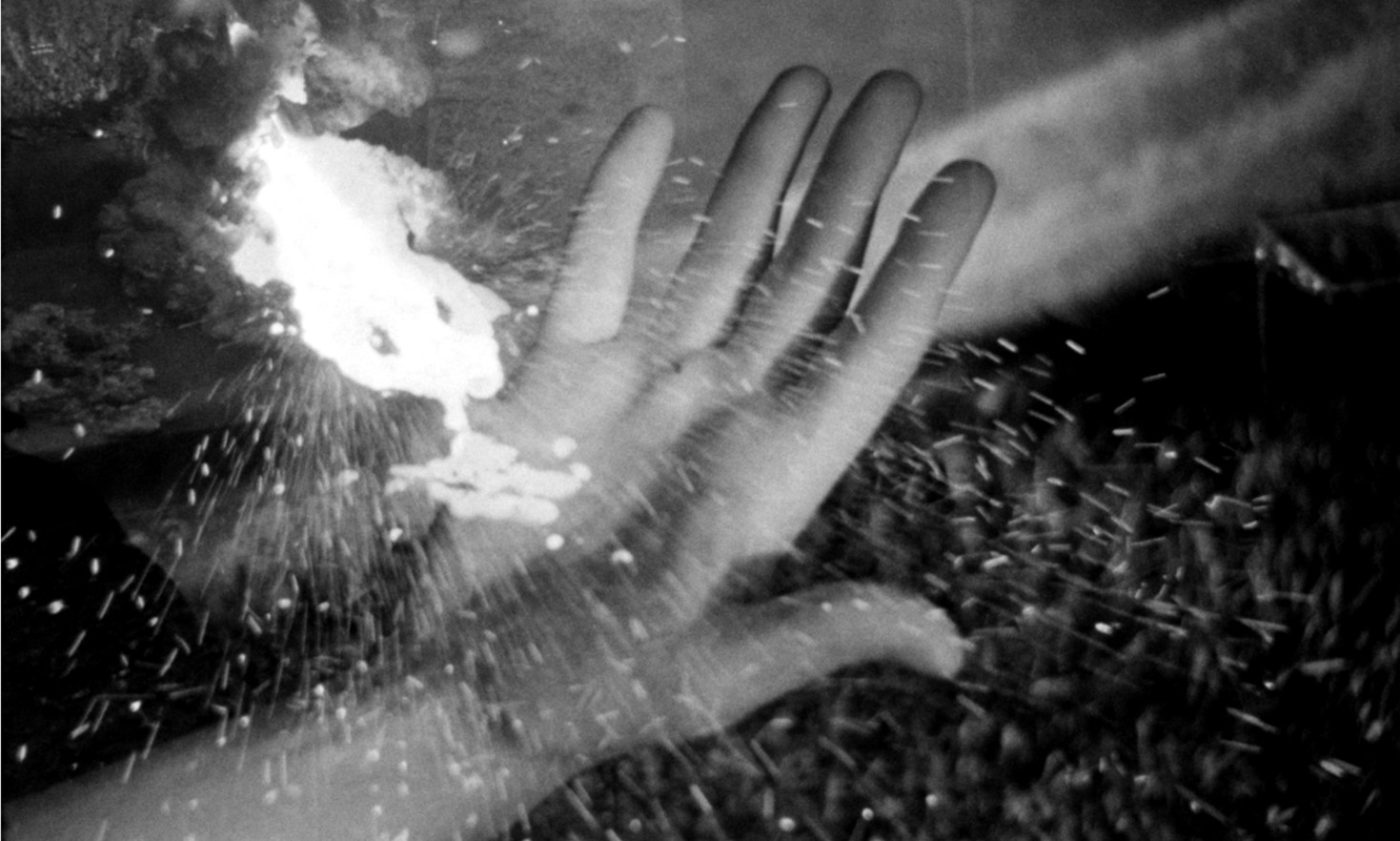
Ana Vaz: Meteoro
8/03/2025 — 18/05/2025
Vereinigung bildender KünstlerInnen Wiener Secession
Friedrichstraße 12, 1010 Wien
The films of Ana Vaz activate and question cinema as an art of the (in)visible and instrument capable of dehumanising the human, expanding its connections with other-than-human or spectral forms of life.
In her exhibition at the Secession, Vaz will showcase her new film series Meteoro dedicated to drawing a critical anthropology of contemporary Europe through its landmarks and infrastructures in capitals of empire such as Paris and Porto. Through historical excavations, spectral hallucinations and anticipatory narratives, Vaz’s work reveals the negative imprint of an empire founded upon colonial violence, displacement, erasures, extraction and waste. Shot with high contrast black and white film, emphasising the fictive archaeology implicit in the images, Meteoro forges an archive of the present, guided by the hands and vision of a future traveler whose gaze is the very embodiment of the film and whose sightings are based upon performed contributions by Caribbean writer and performer Olivier Marboeuf, Tuareg researcher Maïa Tellit Hawad and Portuguese artist Isabel Carvalho.
Ana Vaz, Meteoro (Meteor), 2023–2024, film still, 16mm, transferred to 4K, Courtesy of the artist
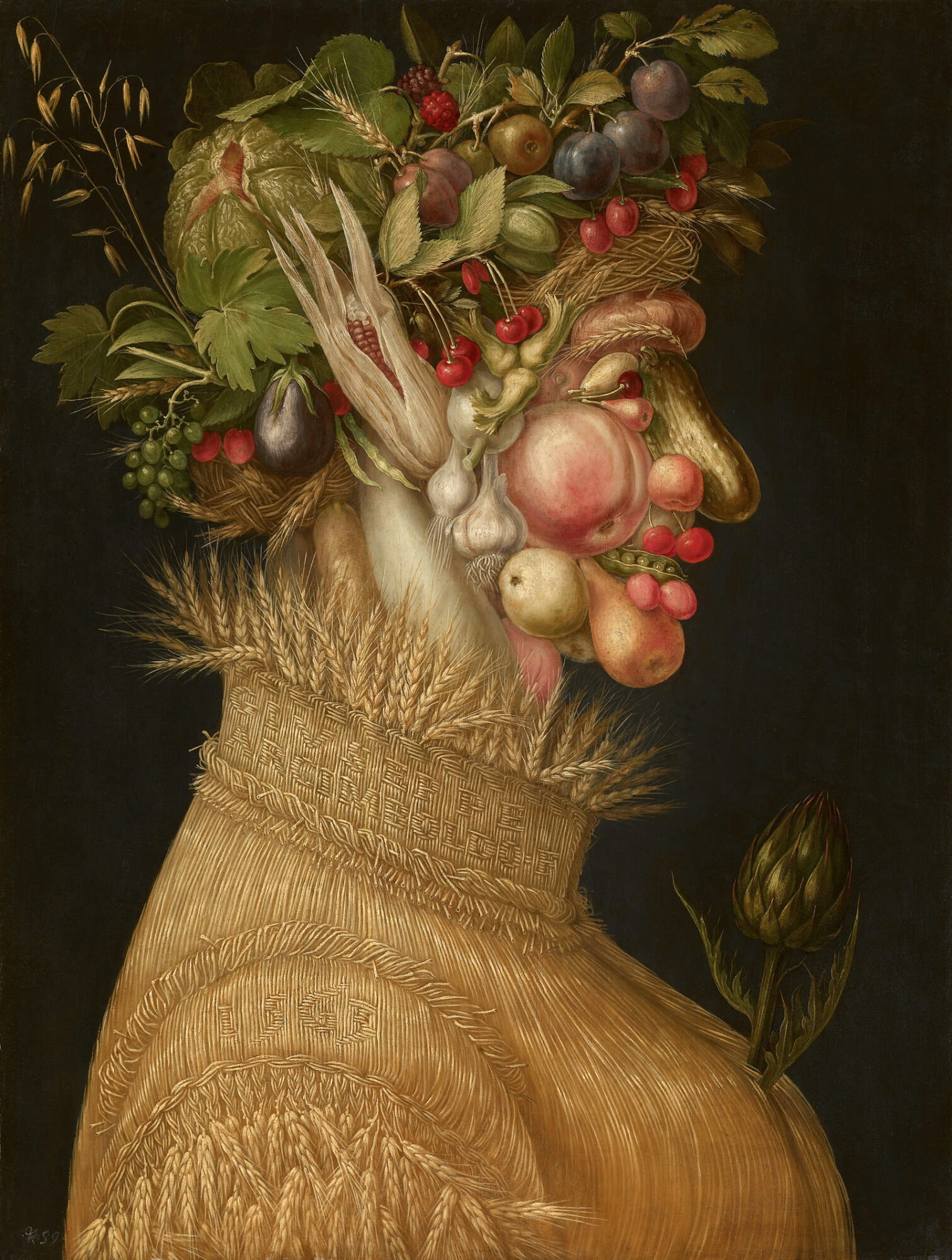
Arcimboldo – Bassano – Bruegel
11/03/2025 — 29/06/2025
KUNSTHISTORISCHES MUSEUM WIEN
Maria-Theresien-Platz, 1010 Wien
From March 2025, the Kunsthistorisches Museum will be showing the major exhibition Arcimboldo – Bassano – Bruegel.
The Times of Nature with masterpieces by Pieter Bruegel the Elder, Giuseppe Arcimboldo, Jacopo and Leandro Bassano and numerous other 16th century artists. What was the relationship of people in the Renaissance to nature and time? How was this visualised in art? What role did the numerous fascinating seasonal and monthly cycles play, which were realised in ever new and varied formulations? These are the questions that the exhibition addresses. It sheds light on aspects of art history as well as the content of the paintings, their original purpose and the ideas of those who commissioned them.
Giuseppe Arcimboldo (1526–1593) Summer dated 1563 Kunsthistorisches Museum, Picture Gallery © KHM-Museumsverband

all this
19/03/2025 — 10/08/2025
MuseumsQuartier Wien
Museumsplatz 1, 1070 Wien
herman de vries
The exhibition by Dutch artist herman de vries presents a work that turns nature itself into a work of art. de vries’ artistic engagement with nature thrives on immediacy and presence – nature is allowed to speak for itself. In a world that is becoming increasingly alienated from natural processes, he challenges us to sharpen our gaze, to make the hidden visible and to discover the extraordinary in the ordinary. “all this” is the artist’s first institutional solo exhibition in Austria. His works can be seen in numerous international art institutions. In 2015, herman de vries represented the Netherlands at the Venice Biennale.
© herman de vries | the poet in his poetry: im löchla, 1987 | Bildrecht, Wien 2025

Anatomy of an Endless Scene
19/03/2025 — 10/08/2025
MuseumsQuartier Wien
Museumsplatz 1, 1070 Wien
Huda Takriti
In her interdisciplinary practice, the Syrian artist Huda Takriti deals with questions of questions of memory, identity, migration and the intertwining of personal and collective personal and collective history. In her exhibition at the MuseumsQuartier Wien, she is showing two video works in which she explores the dynamics of power, time and historiography – using the example of the Algerian revolution, among others.
Clarity is the Closest Wound to the Sun, One Channel Video (Still), 2023 © Huda Takriti | Bildrecht, Wien 2025
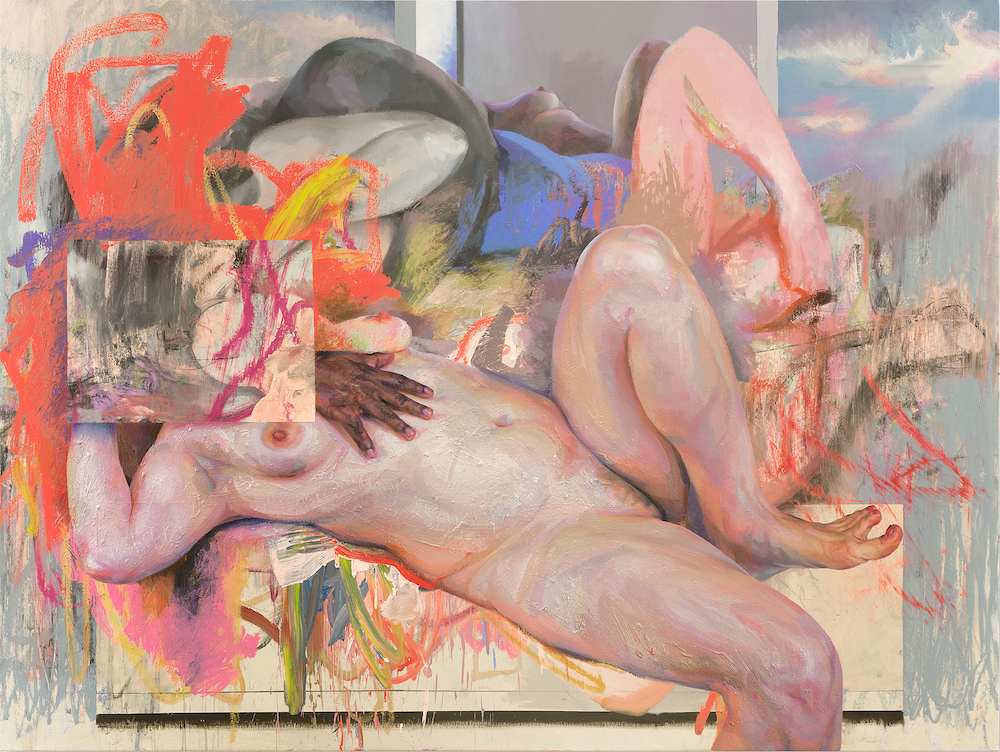
Jenny Saville
21/03/2025 — 29/06/2025
Albertina
Albertinaplatz 1, 1010 Wien
Gaze
Internationally acclaimed artist Jenny Saville (born 1970) was a central member of the Young British Artists and the sole figurative painter to participate in the legendary exhibition Sensation at the Royal Academy of Arts in London in 1997. For over three decades, Saville has explored the centuries-old tradition of representing the human body, with her figures occupying an ambiguous zone between idealization and deconstruction. Drawing inspiration from the annals of art history – from Old Masters such as Leonardo and Raphael through to Egon Schiele, Picasso, Francis Bacon and Lucian Freud – hers is a painterly practice defined by physicality, carnality and the interplay between new and old media.
Saville translates the traditional artistic gestures of these revered painters into a unique painterly language that is truly contemporary, with her work oscillating between the realms of figuration and abstraction. Like a sculptor with a brush, her figurative representations often begin as abstract color fields and thick coatings of paint, which gradually take on form and definition as the layers continue to build. With ancient or Christian iconography serving as the template for her compositions, for her choreography of space, figures and surfaces, Saville is an artist who through both technique and tribute has developed a hybrid canon of forms that can be read as a painterly renewal of history.
Jenny Saville Song of Songs, 2020–2023 Fredriksen Family Art Collection © Jenny Saville / Bildrecht, Wien 2025 Foto: Prudence Cuming Associates Ltd. C
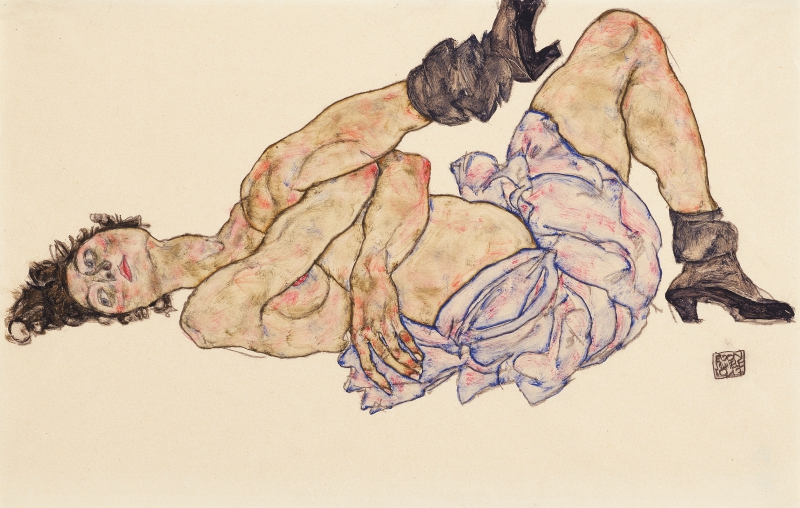
Egon Schiele
28/03/2025 — 13/07/2025
Leopold Museum
Museumsplatz 1, 1070 Wien
Last Years
The exhibition “Times of upheaval. Egon Schiele’s final years: 1914-1918” interweaves biographical and artistic elements and deals with the ruptures and changes in Schiele’s ‘late work’ from 1914 to 1918, to which less attention has been paid to date. Schiele gradually abandoned the radical formal experiments of the years 1910 to 1914 and developed a more realistic style, which was characterized by deeper empathy. His strokes calmed down, became more flowing and organic, and the sitters gained in physical fullness. The exhibition also provides new insights into this decisive period through the interweaving of contemporary archive material, such as Edith Schiele’s previously unpublished diary.
Egon Schiele, Liegender weiblicher Akt, 1917 © Moravská galerie v Brně / Moravian Gallery in Brno, Foto: Moravian Gallery in Brno

Oskar Kokoschka
10/05/2025 — 26/10/2025
Universität für angewandte Kunst Wien
Oskar-Kokoschka-Platz 2, 1010 Wien
School of Vision
In 2025, the Kokoschka Museum Pöchlarn is dedicating itself to Oskar Kokoschka’s decades of work as a teacher and his intensive involvement with educational issues. The exhibition spans a wide range from his first teaching experiences shortly after finishing his studies at the Vienna School of Applied Arts to his great, international successes as a teacher in the first post-war decades.
Kokoschka’s early work as a drawing teacher at Eugenie Schwarzwald’s private school in 1911 ended in a scandal – the school authorities had him dismissed. His teaching style seemed too unorthodox and not academic enough. The international success of his “School of Seeing”, founded in Salzburg in 1953, stands in stark contrast to this. Kokoschka’s teaching focused on the figurative depiction of moving models. The way he worked in his painting class and the tremendous impact of his personality became a formative experience for numerous students.
Oskar Kokoschka mit Schüler:innen der „Schule des Sehens“, Salzburg 1953–1955, Foto: F. Solms, Oskar Kokoschka Dokumentation P